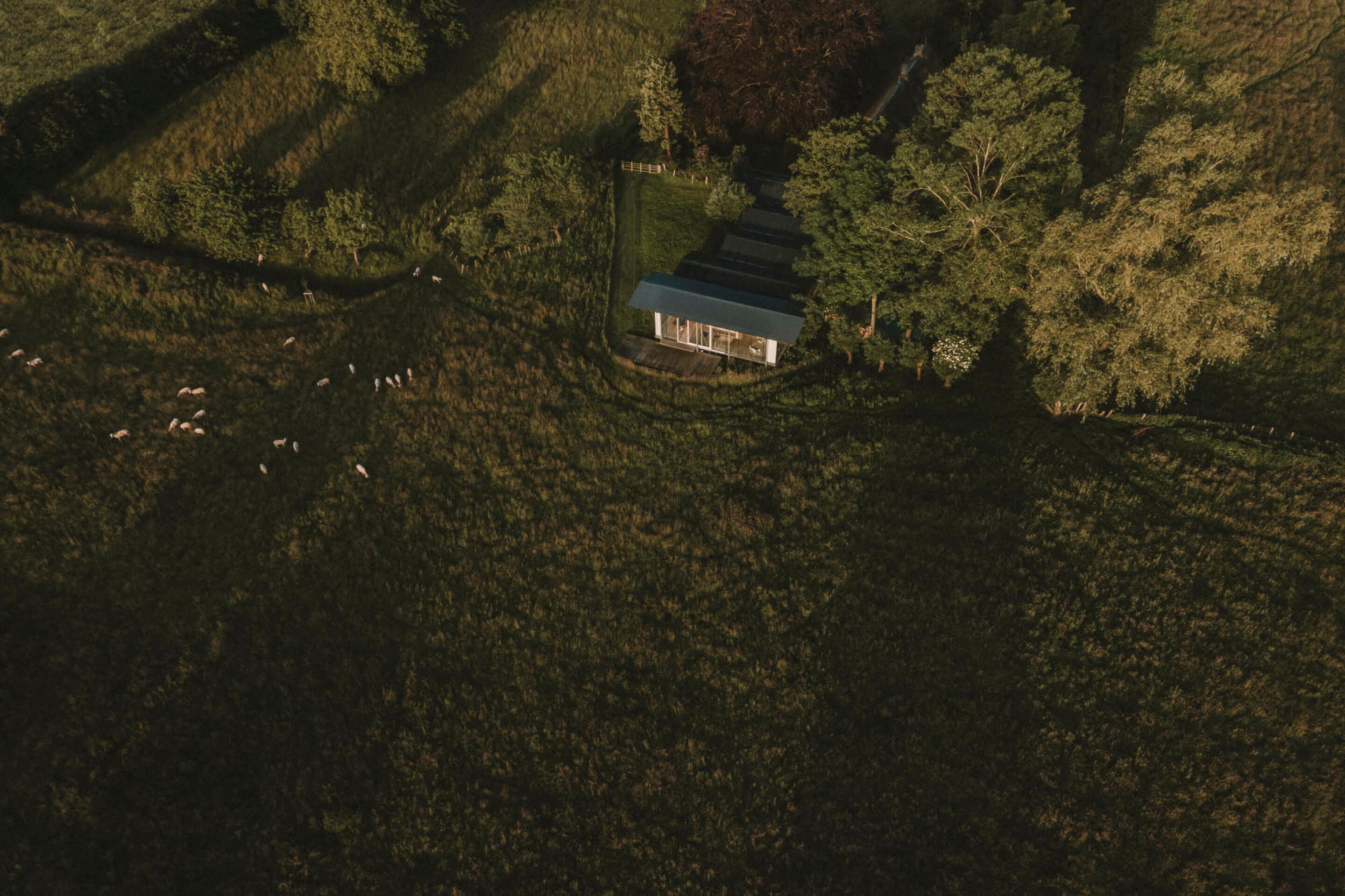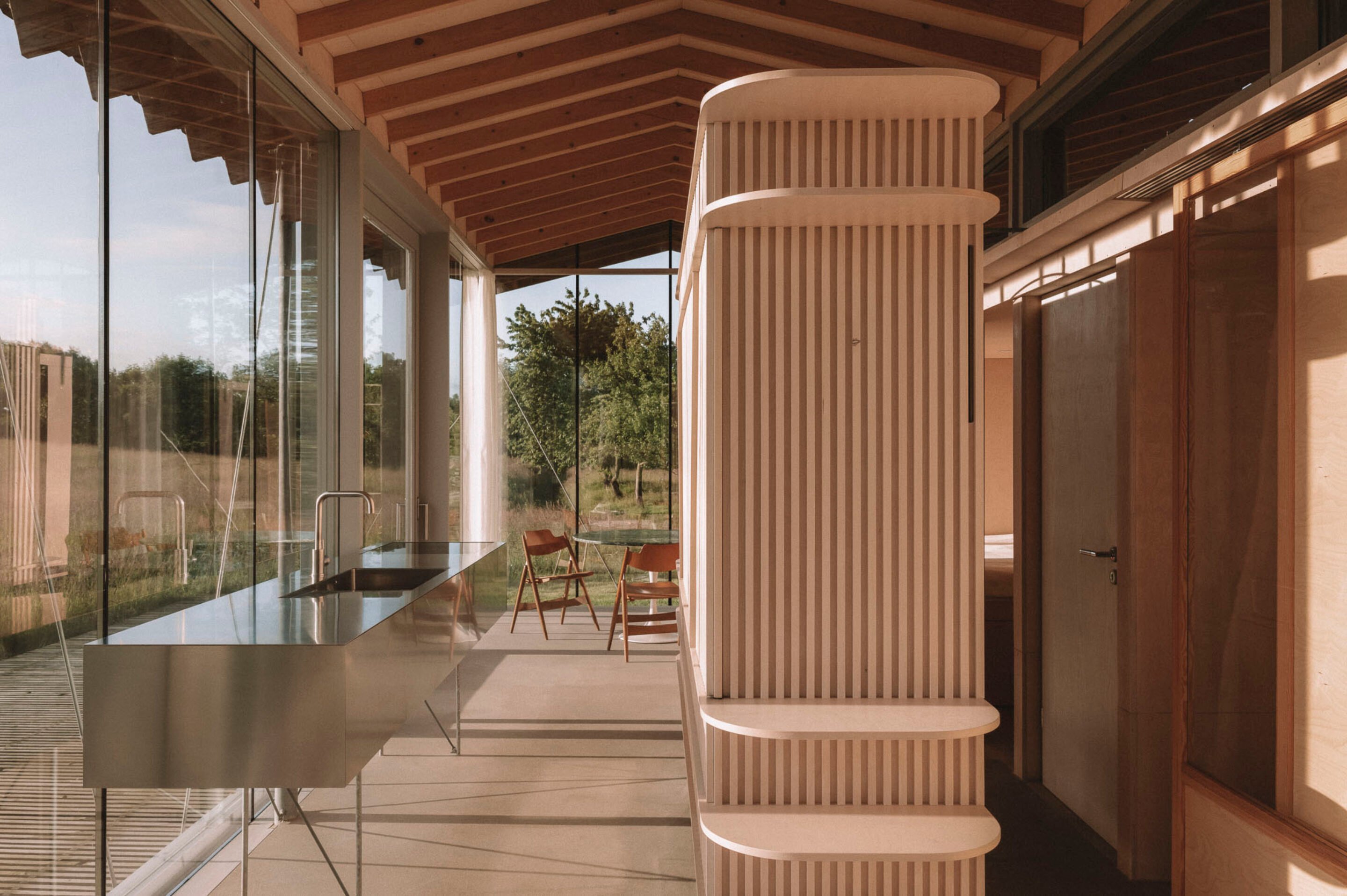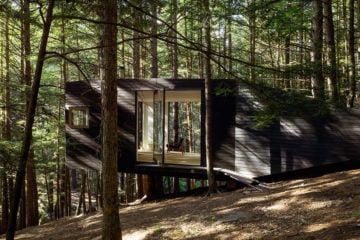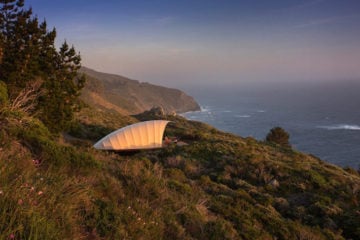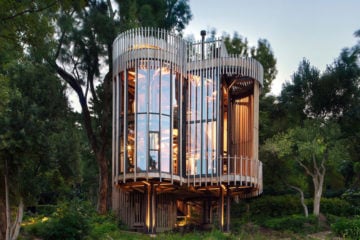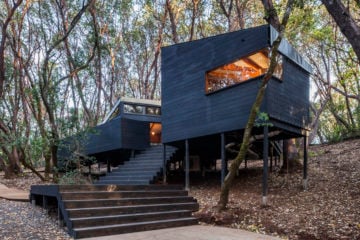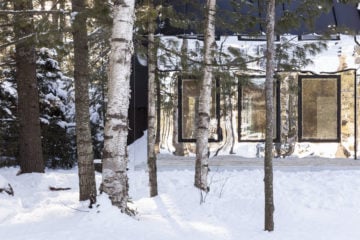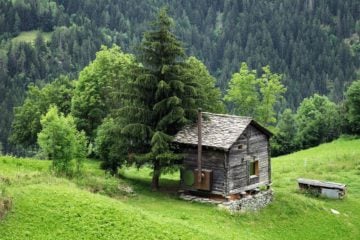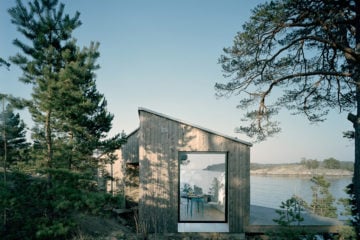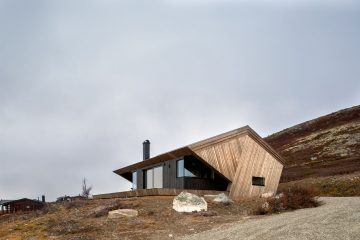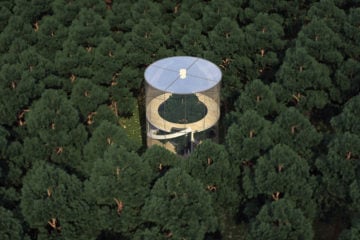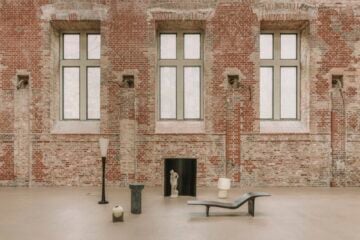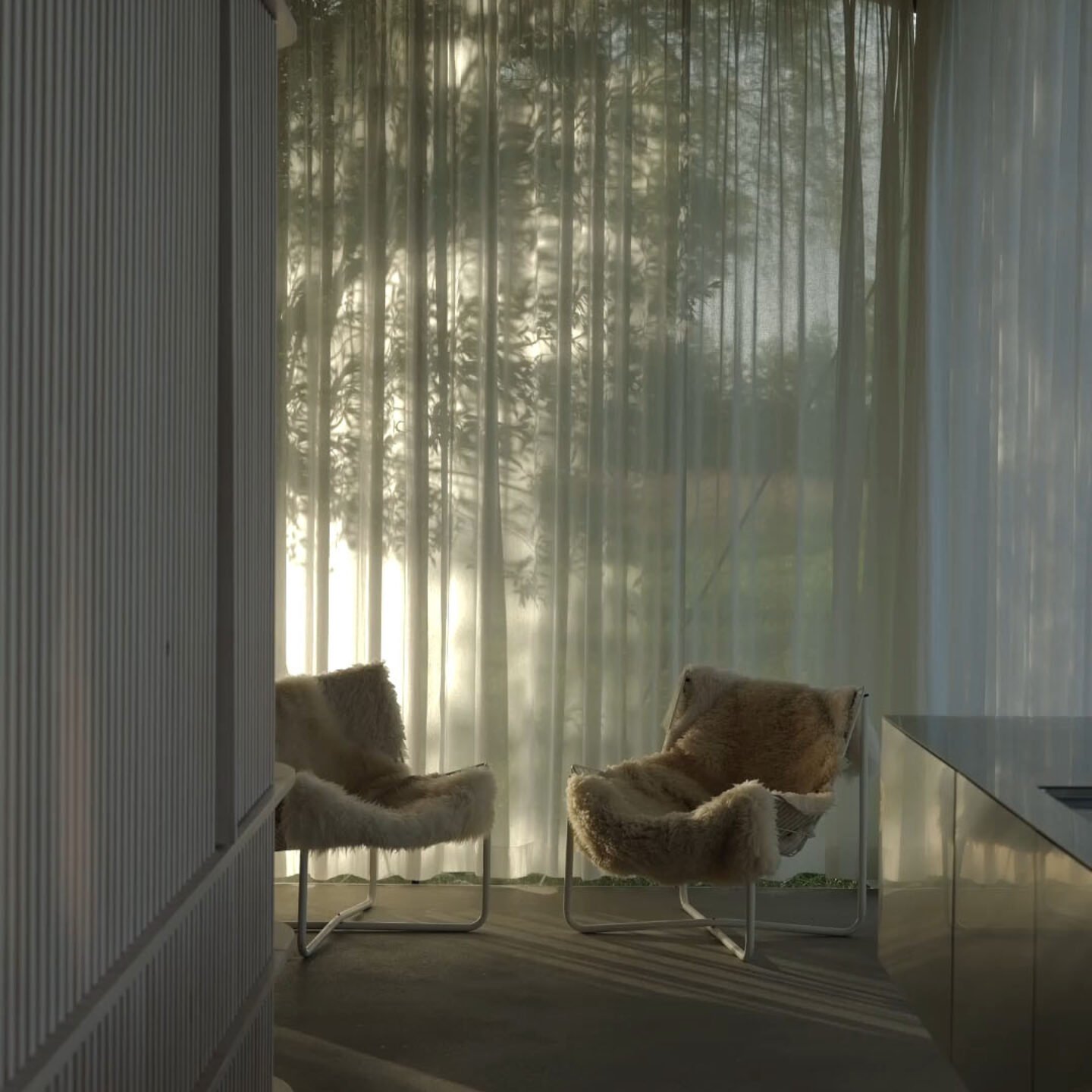
The Essentialist Cabin: Hof Ahmen by Atelier Sunder-Plassmann
- Name
- Atelier Sunder-Plassmann
- Project
- Hof Ahmen
- Images
- Clemens Poloczek
- Words
- Anna Dorothea Ker
Some architects take their time embedding themselves into the public conscience, while others burst onto the scene in the splash of a single project. For young Berlin practice Atelier Sunder-Plassmann, that project was Hof Ahmen, a 55m2 glass-walled holiday home on the “gentle landscape” of a working sheep farm in the brooding coastal grasslands of Schleswig-Holstein between the Baltic and North Seas. To accompany an exclusive editorial for Ignant, Founder Malte Sunder-Plassmann shares how a personal project realized in his “night hours” catapulted an architecture office into being.
The vocabulary of architecture is embedded in Malte Sunder-Plassmann’s DNA. His paternal grandfather was a practitioner, as are his three uncles. His father, too, studied architecture before shifting his focus from the built environment to the natural. Today, his parents run a sheep farm, Hof Ahmen, in the brisk melancholic landscape of Kappeln, Schleswig-Holstein, washed over by ever-changing skies.
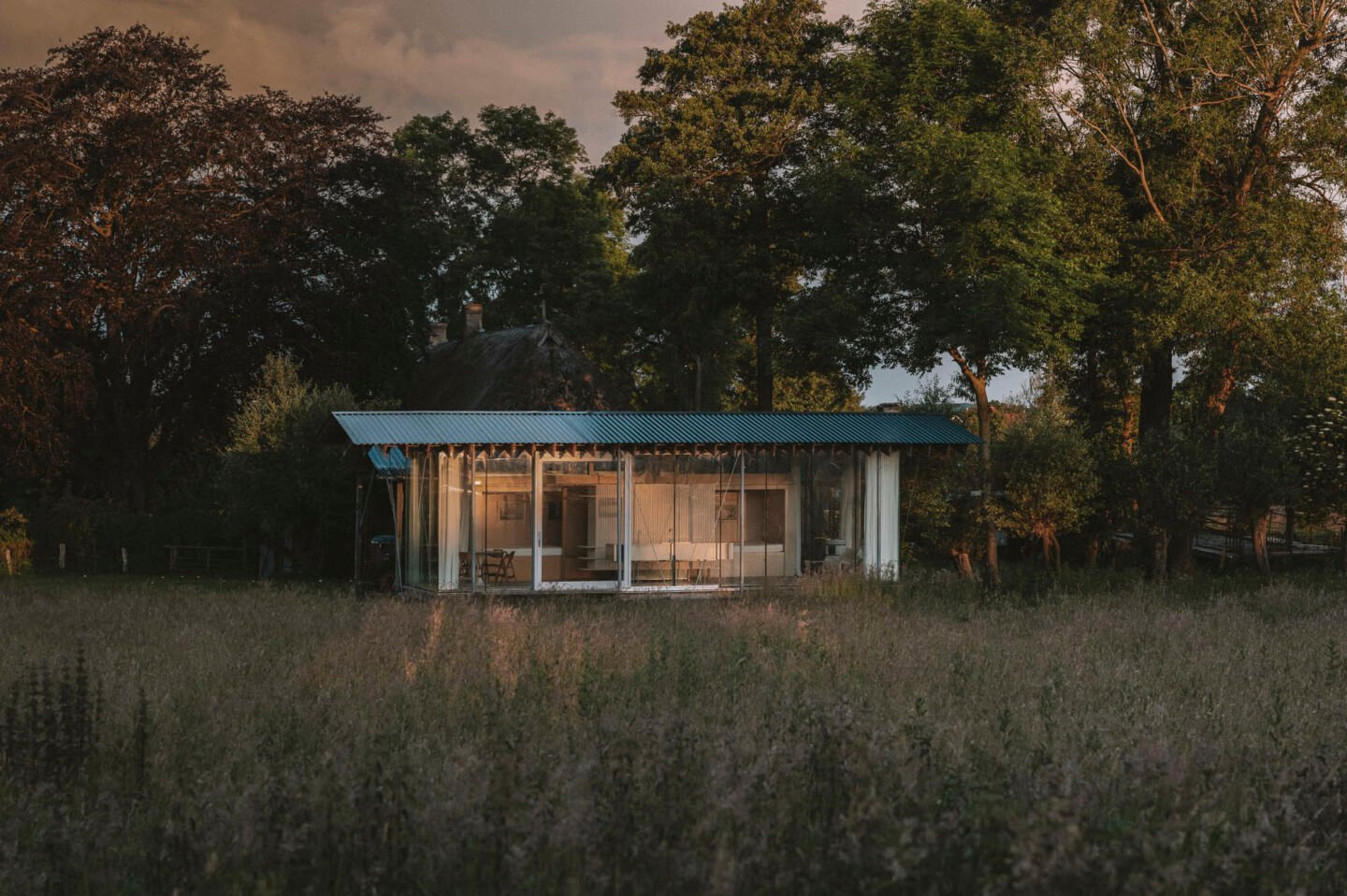
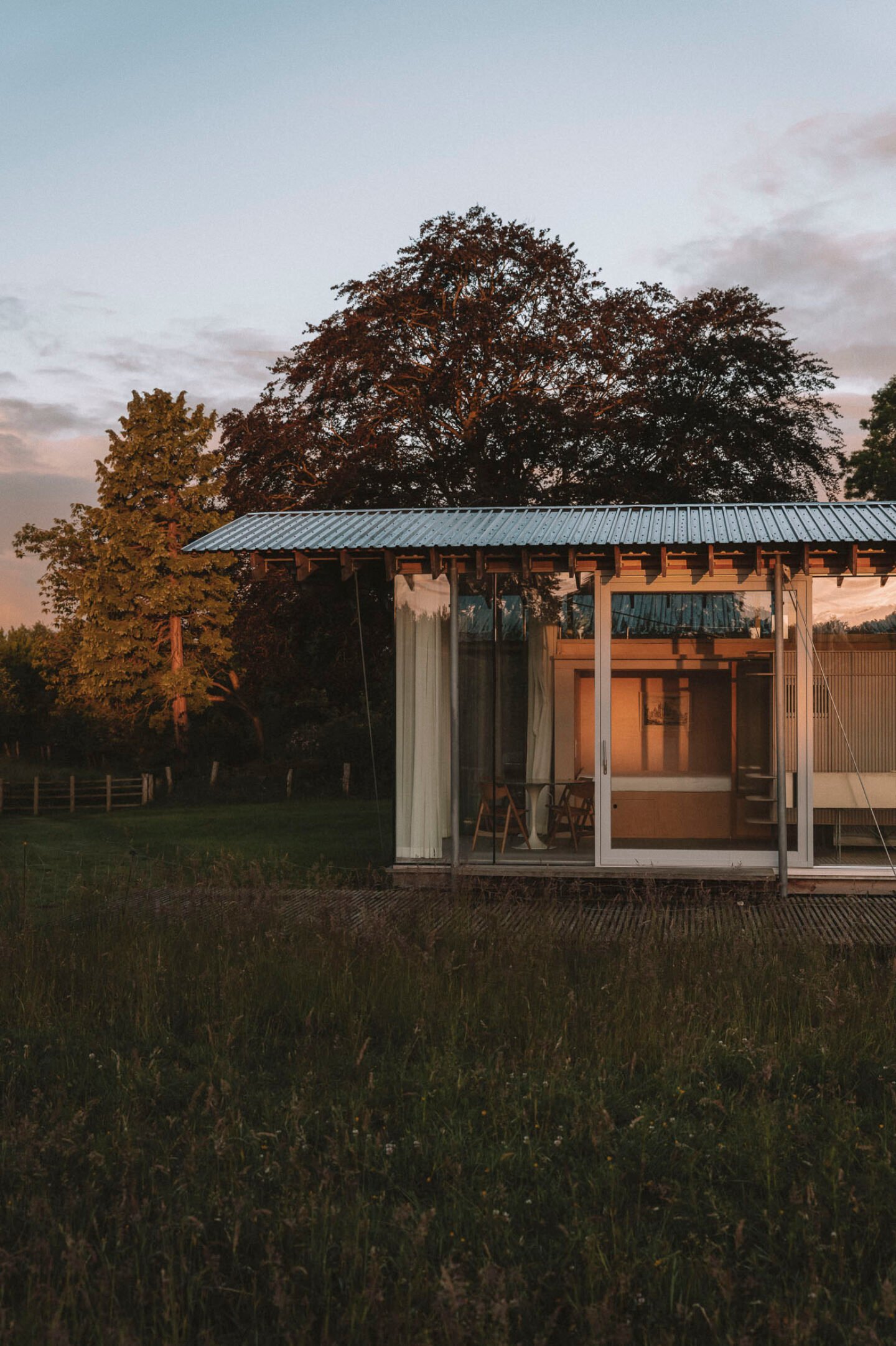
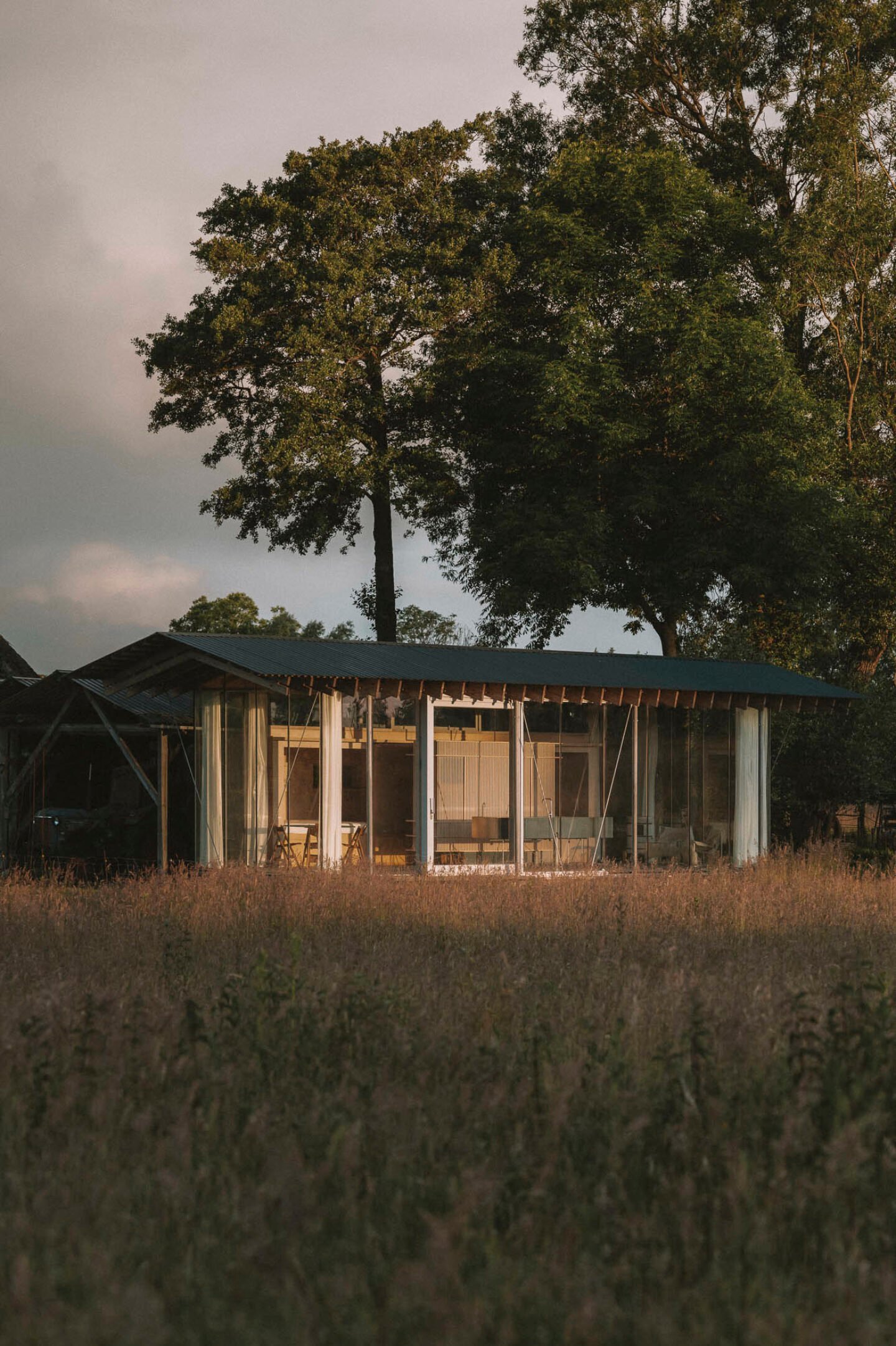
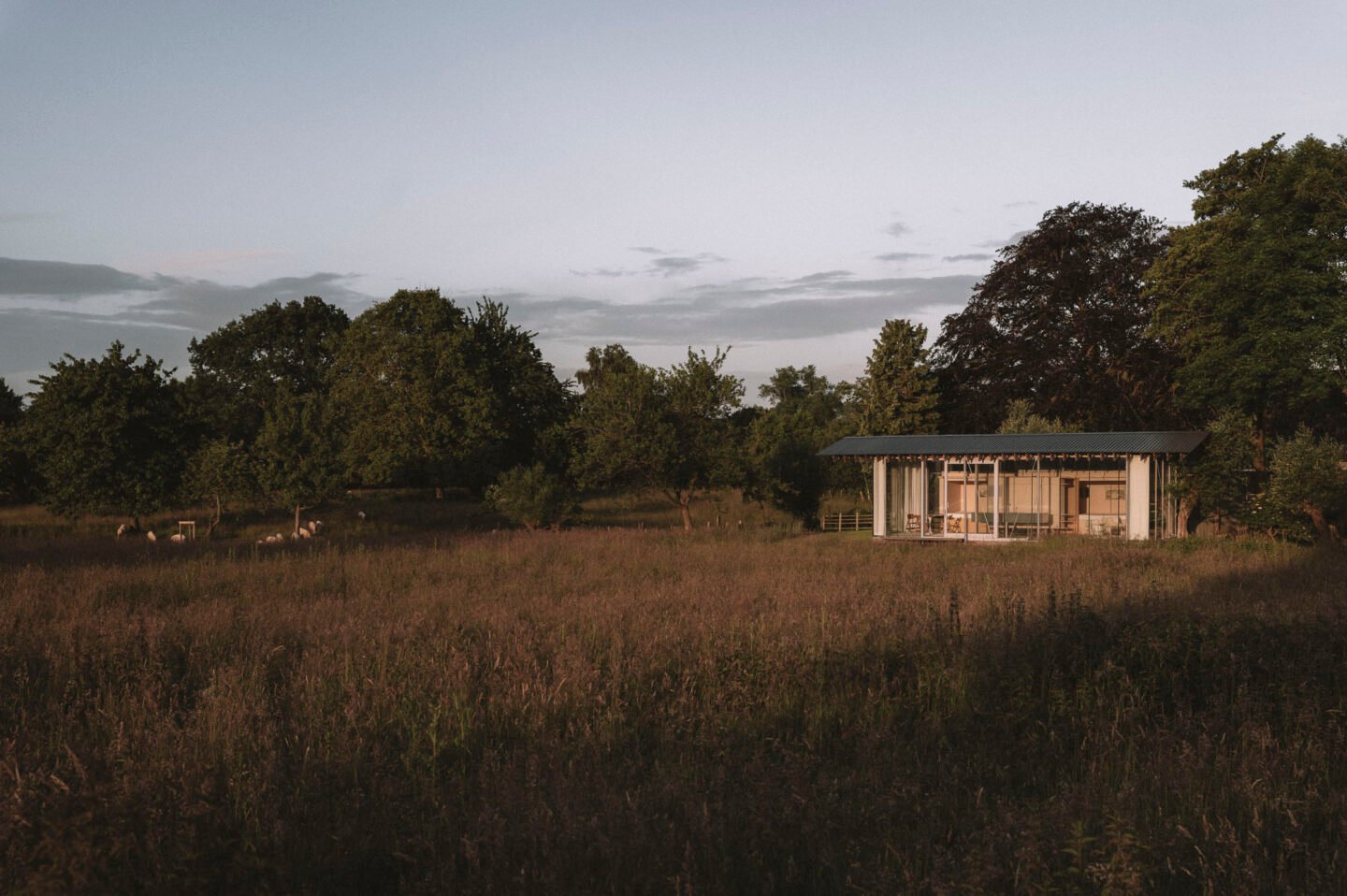
Like his father, Sunder-Plassmann briefly considered diverging from the trail blazed by his forebears, toggling between medicine and architectural practice for a while. Then came the revelation that he wouldn’t be happy if he got to 40 without having realized his own buildings. He committed to pursuing architecture at the Bauhaus-Universität Weimar, where he felt “completely, directly welcome.” Several internships during and after his studies saw him work with Studio Barozzi Veiga in Barcelona and Sou Fujimoto in Tokyo.
Japanese architectural expressions had left a strong impression on Sunder-Plassmann since his father took him to visit SANAA’s Zeche Zollverein during an EU Mies Award exhibition when he was a teenager. He recalls not only his own wonder at the experience of the building but how it touched those in the group tour he was part of: “You saw how everybody was moved by the space.” Later, his experience with Fujimoto deepened his insight into the cultural approaches behind the buildings that inspired him. “Language-wise, everything in Japan is super light. There’s the feeling that everything is drawn with a pencil – H, not B.”
Continuing to broaden his international horizons, Sunder-Plassmann spent an exchange year in the United States, obtained a Master of Arts degree from Berlin’s University of the Arts, and was working for the Berlin satellite office of Spanish practice Nieto Sobejano Arquitectos when Covid hit. As lockdowns wore on, a collective yearning for escapism prevailed – out of the city, back to nature. Friends planted the seed to build a holiday cabin on his parents’ property. He took it seriously. Over two years, while working full-time, he brought the project to life.
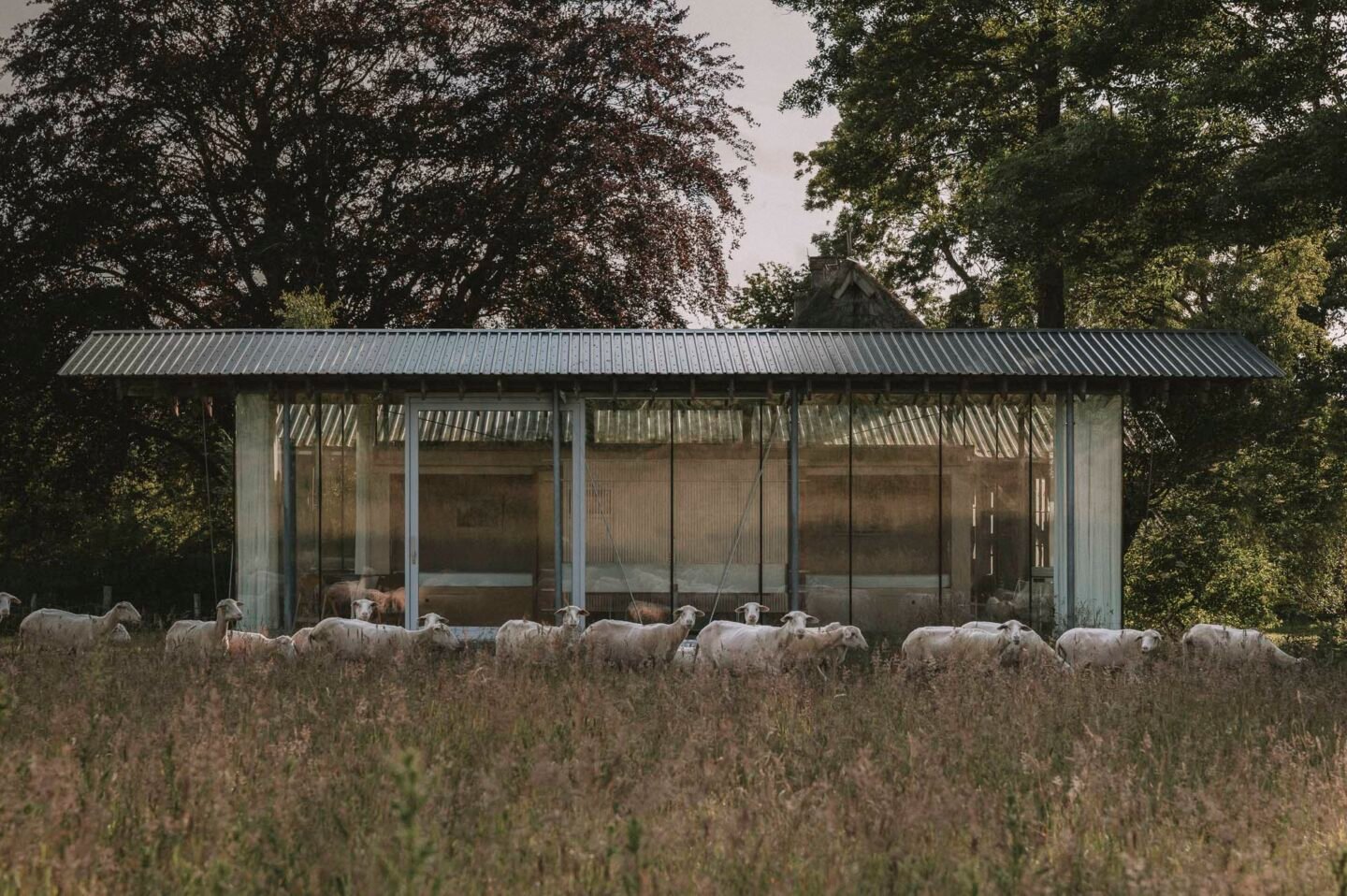
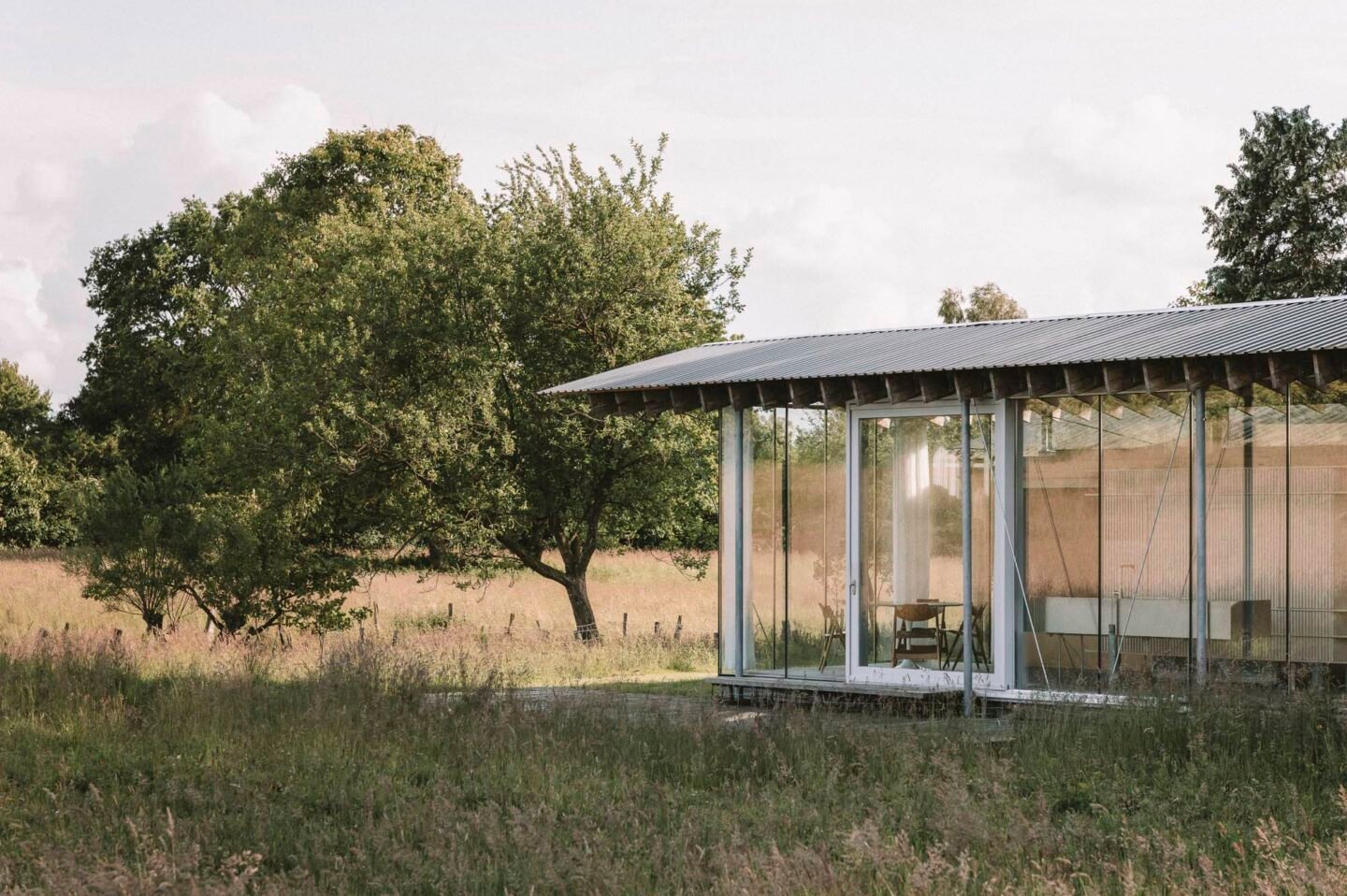
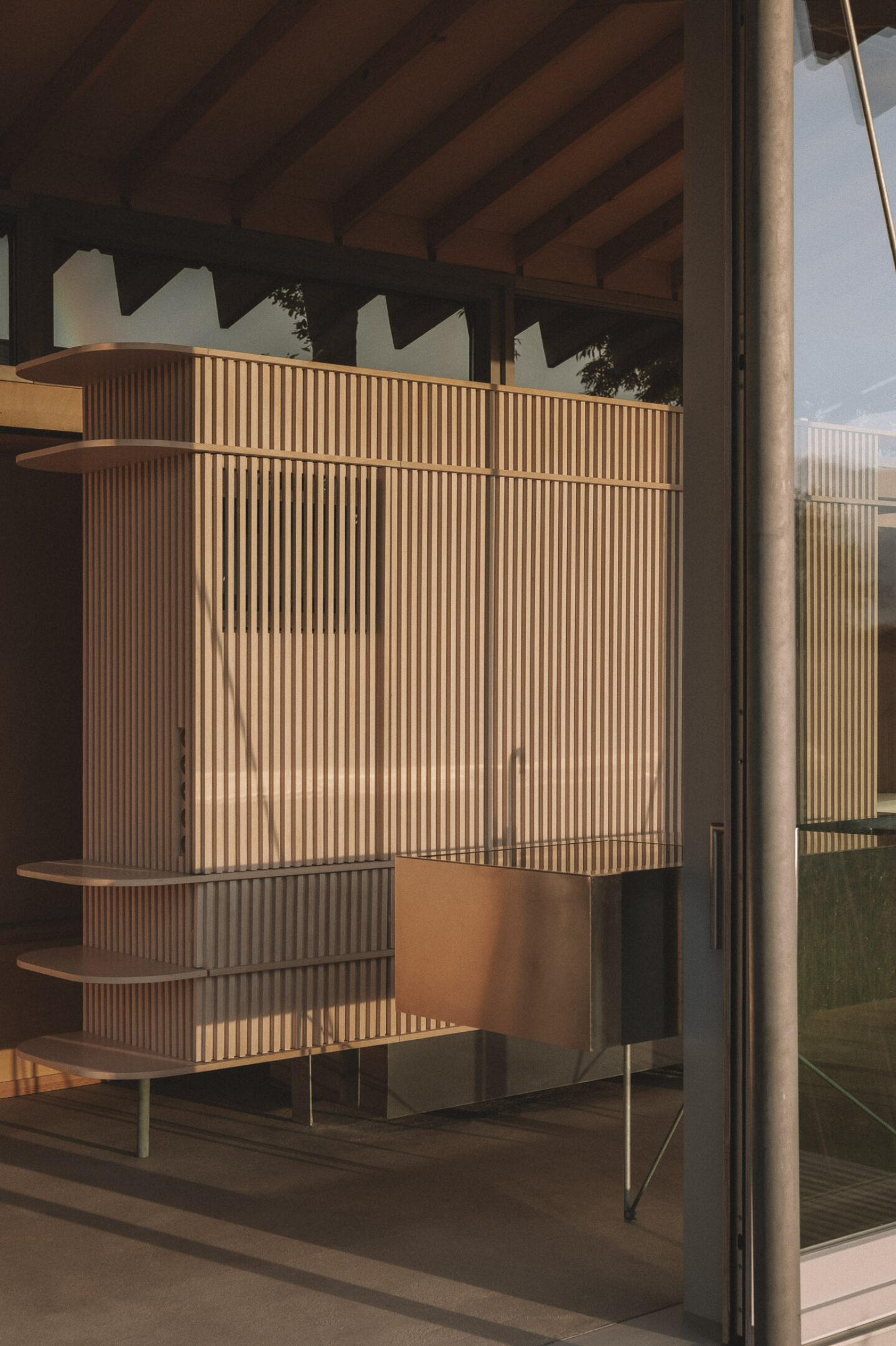
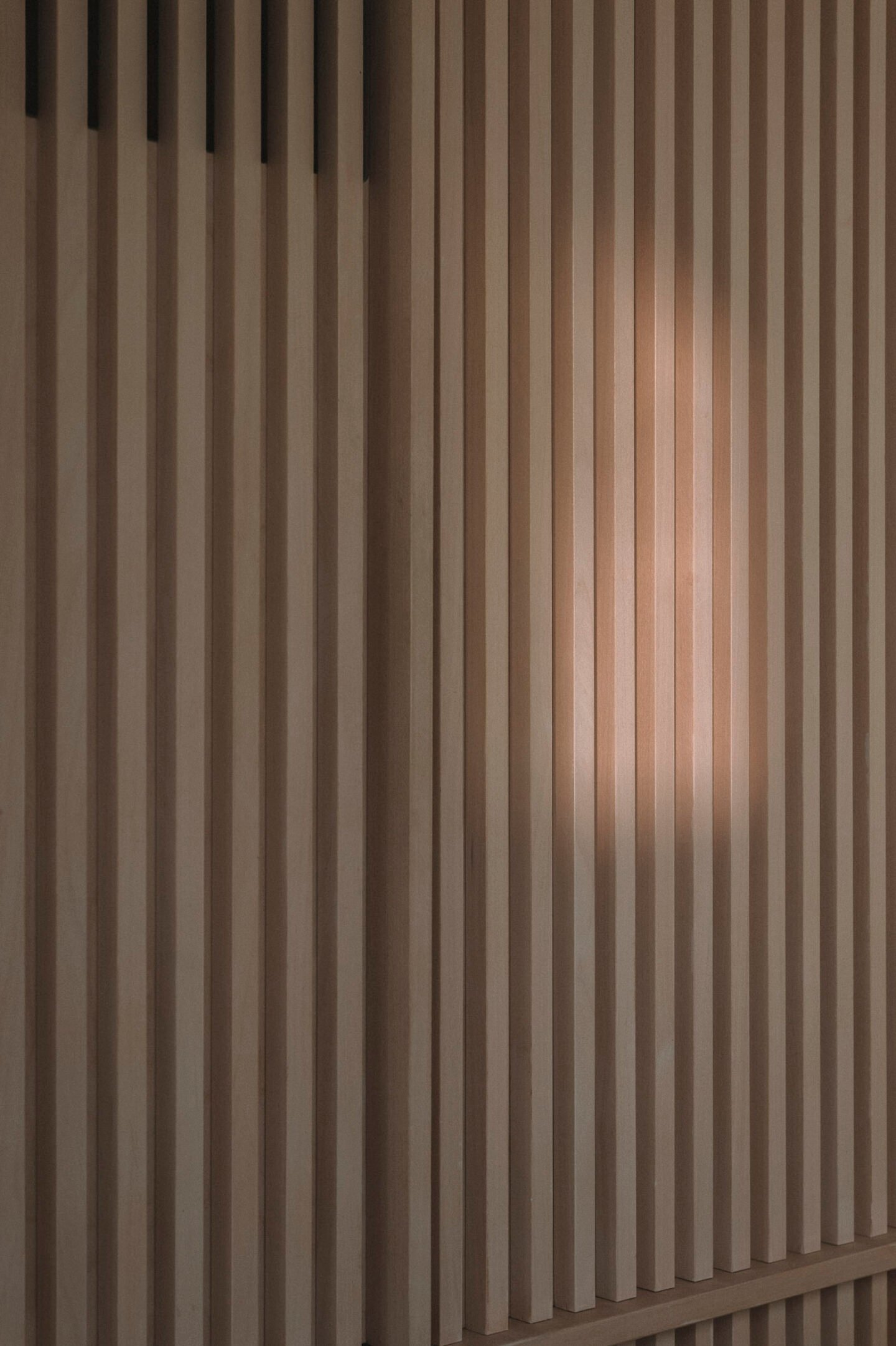
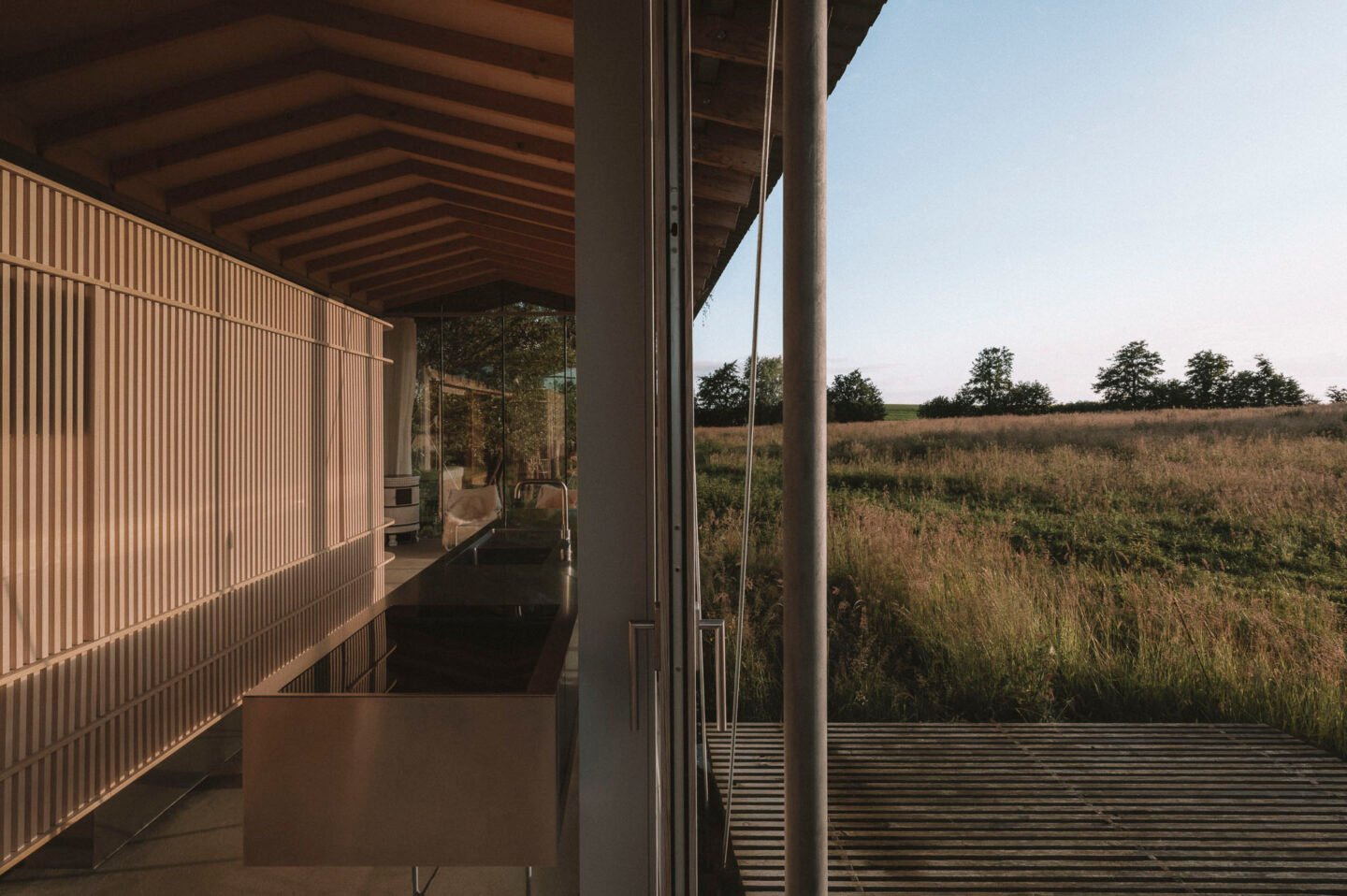
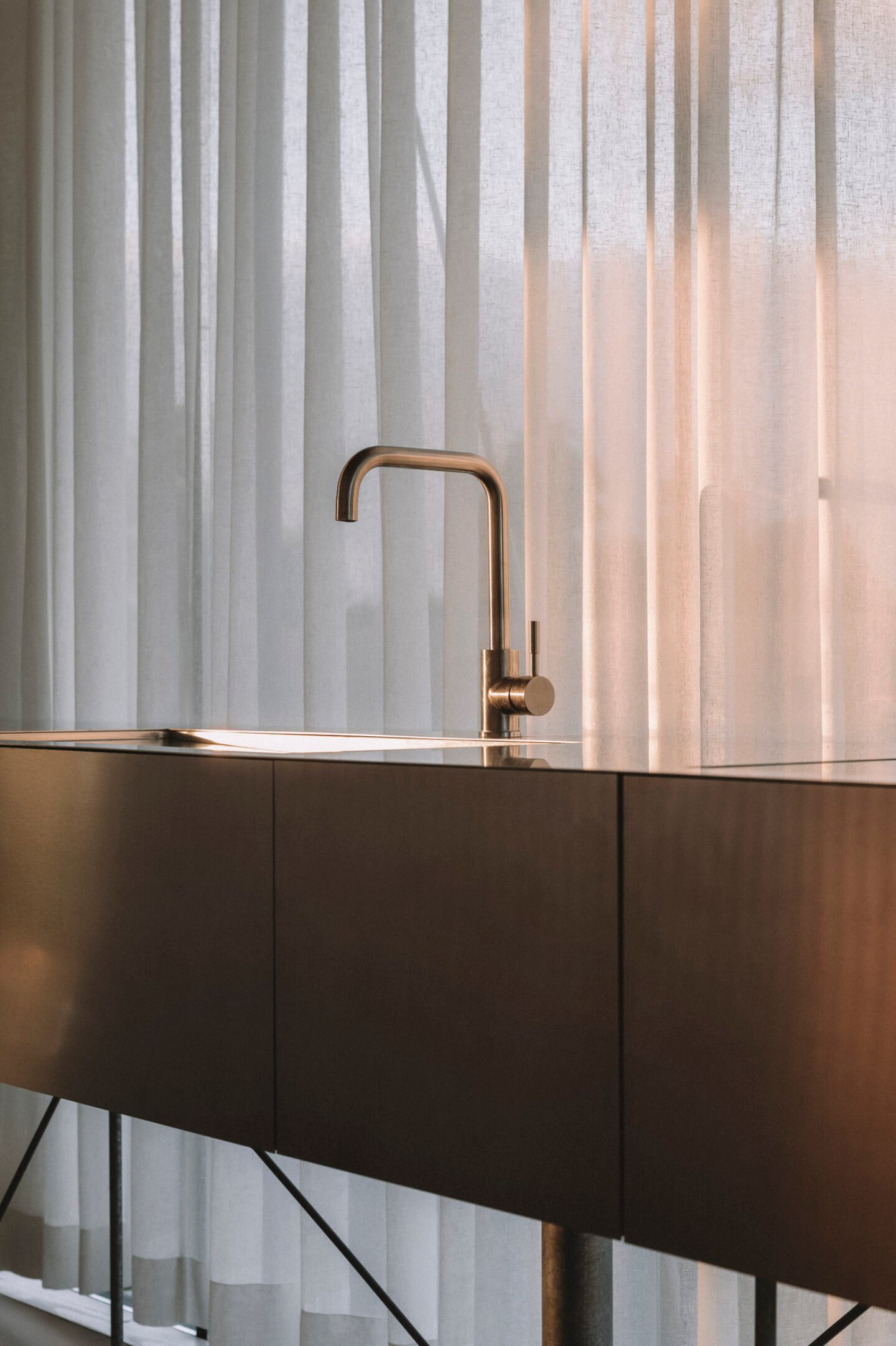
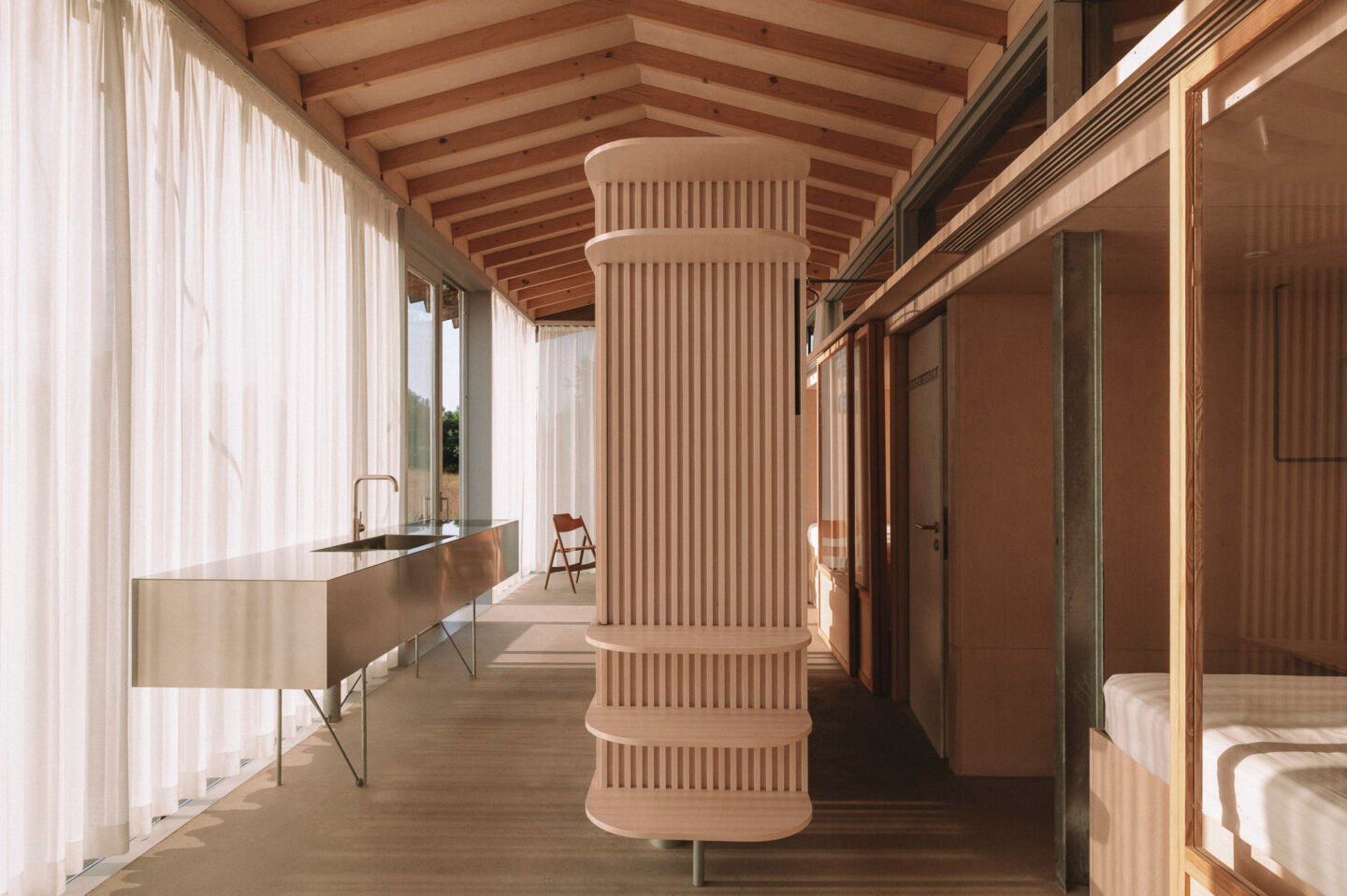
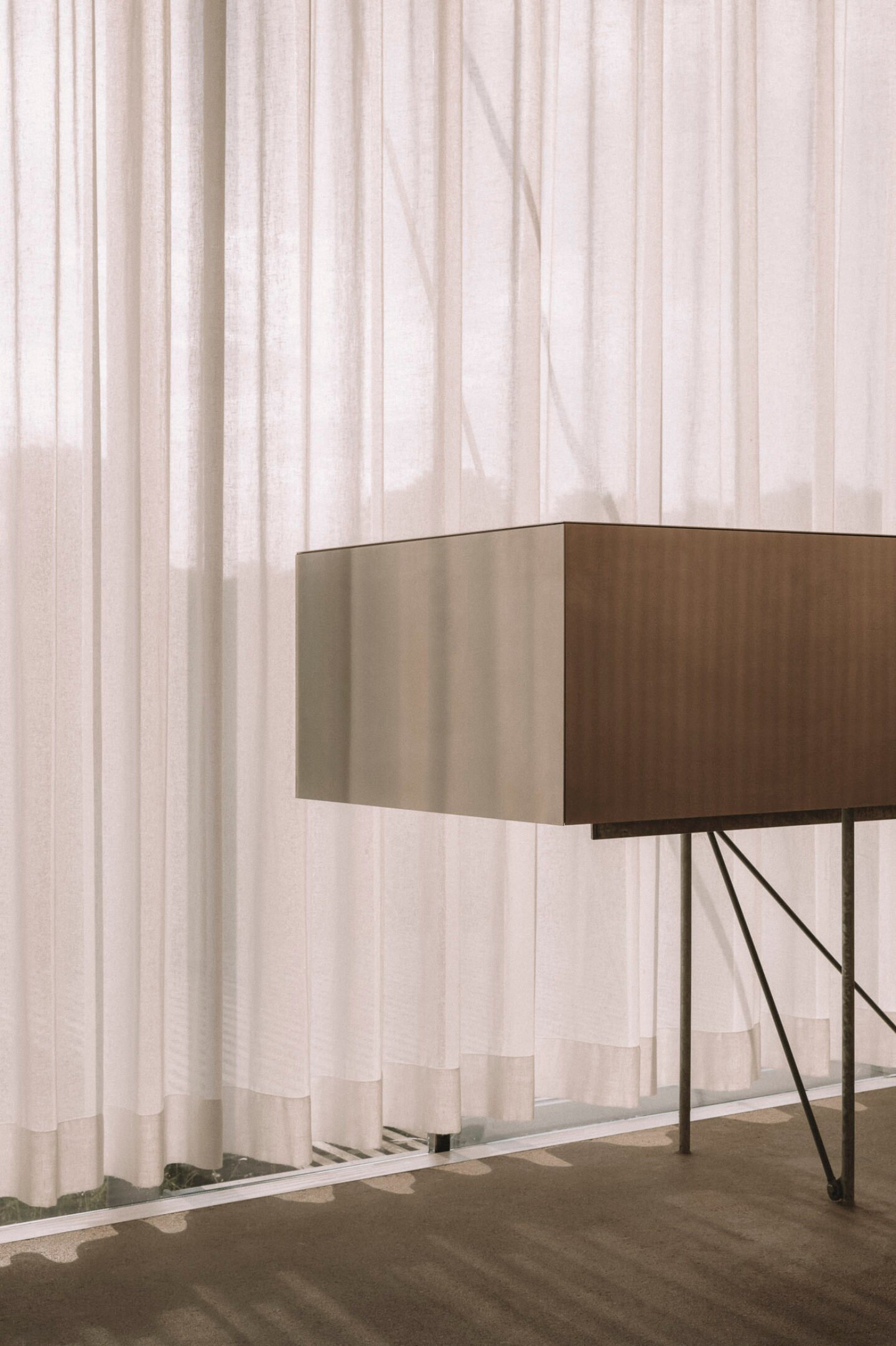
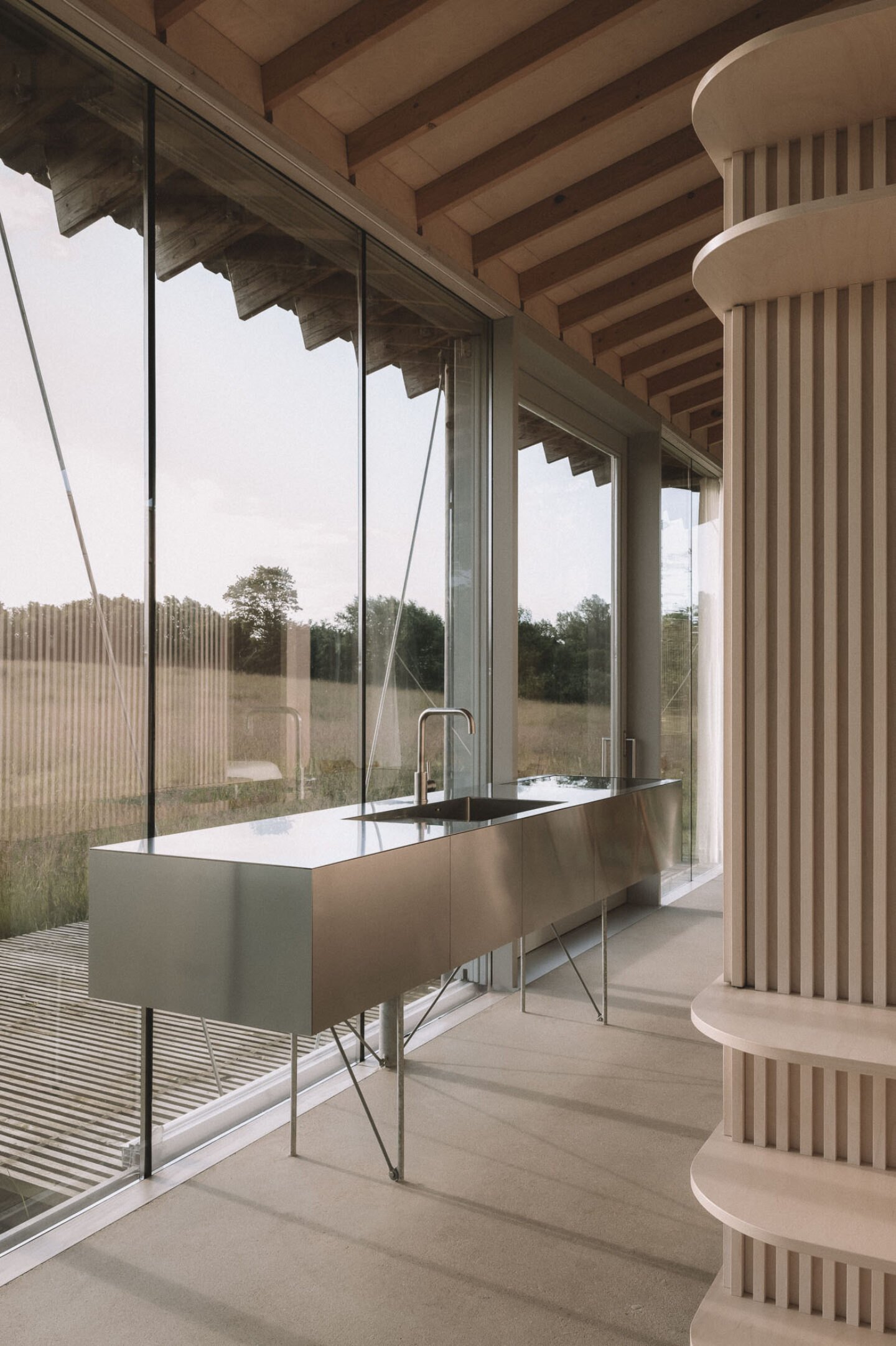
“The idea was to have a space where you can simply enjoy being there: the farm, the countryside, the landscape.”
Modernism meets local rigor in the pavilion-like cabin, set atop a thick wooden slab and framed by a back wall and three glass sides – “the best decision we made” – warmed by birch wood and a floating roof that references the local “Drempel” vernacular of the farm’s original barn. Within the “glazed platform”, two wooden volumes demarcate sleeping areas and private spaces. Sunder-Plassmann enlisted a friend, Tobias Grothues, to design a custom freestanding kitchen and sourced furniture that spoke to him personally.
Sunder-Plassmann begins each project by distilling its intention to its essential form, which in turn serves as its throughline: “How can we pin down the intention in one sentence?” For Hof Ahmen, named for the farm to which it belongs, “the idea was to have a space where you can simply enjoy being there: the farm, the countryside, the landscape,” says Sunder-Plassmann.
The guiding thread was unwound from the given conditions – a modest plot of 55m2. “From there, we thought that the building itself couldn’t be super gentle, as the gentleness was in nature, in the surroundings. So we tried to bring it into the building. The landscape itself is the protagonist of the interior. The architecture inside becomes part of nature.”
Intending to rent the cabin to claim back its building costs before reserving it for friends, Sunder-Plassmann listed Hof Ahmen on the popular holiday home listing site Urlaubsarchitektur [Holiday Architecture]. Within three days, it was booked out for the rest of the year. Then came the press and award nominations, and Sunder-Plassmann’s friends had to jostle for the getaways they’d been promised. “Overnight, I had to invent a name. Within a week, I built a homepage,” he recounts the origins of his office. He kept it simple, adding ‘Atelier’ to distinguish his work from the practice of his uncle, Gregor, of Sunder-Plassmann Architekten.
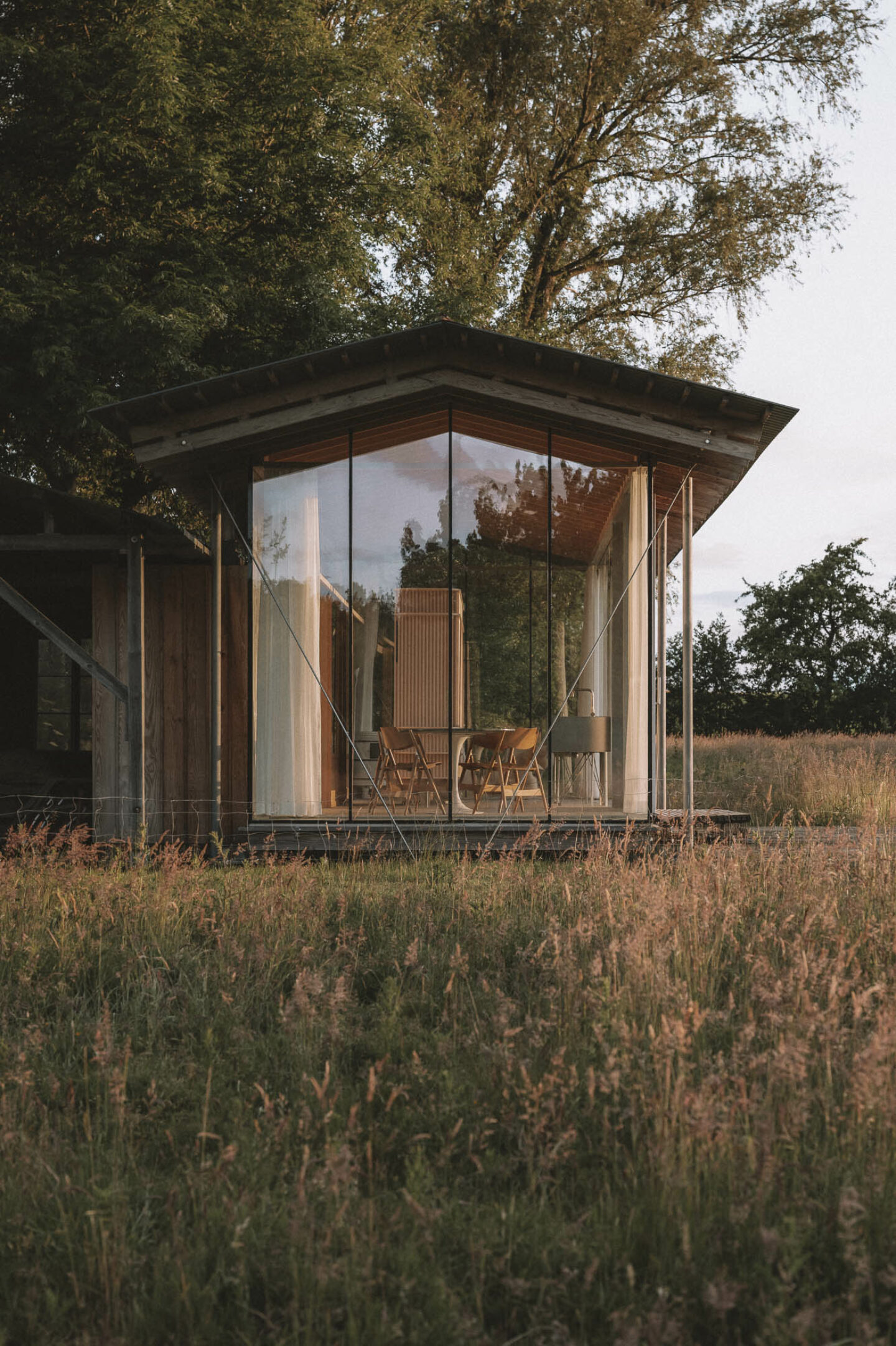
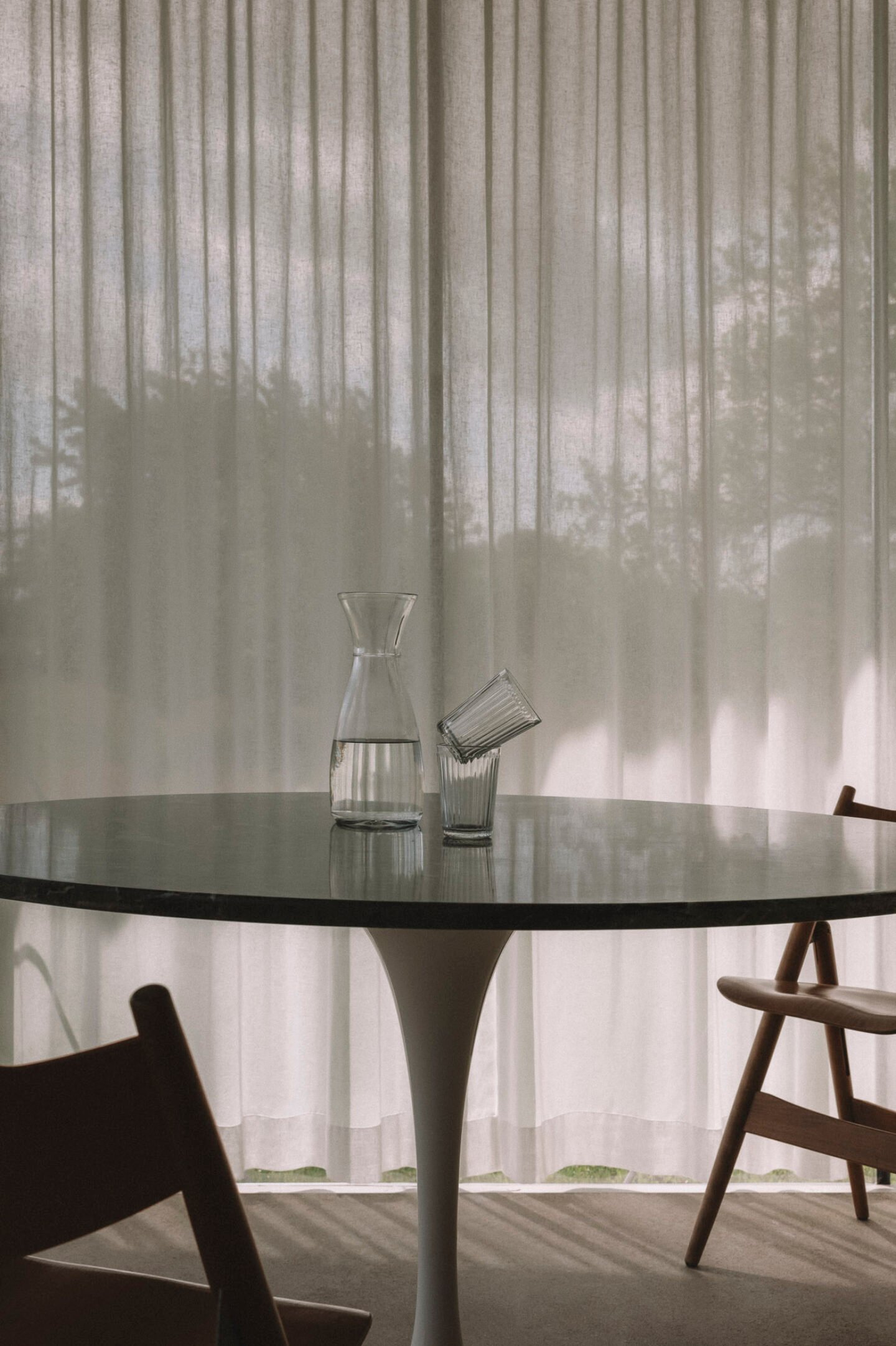
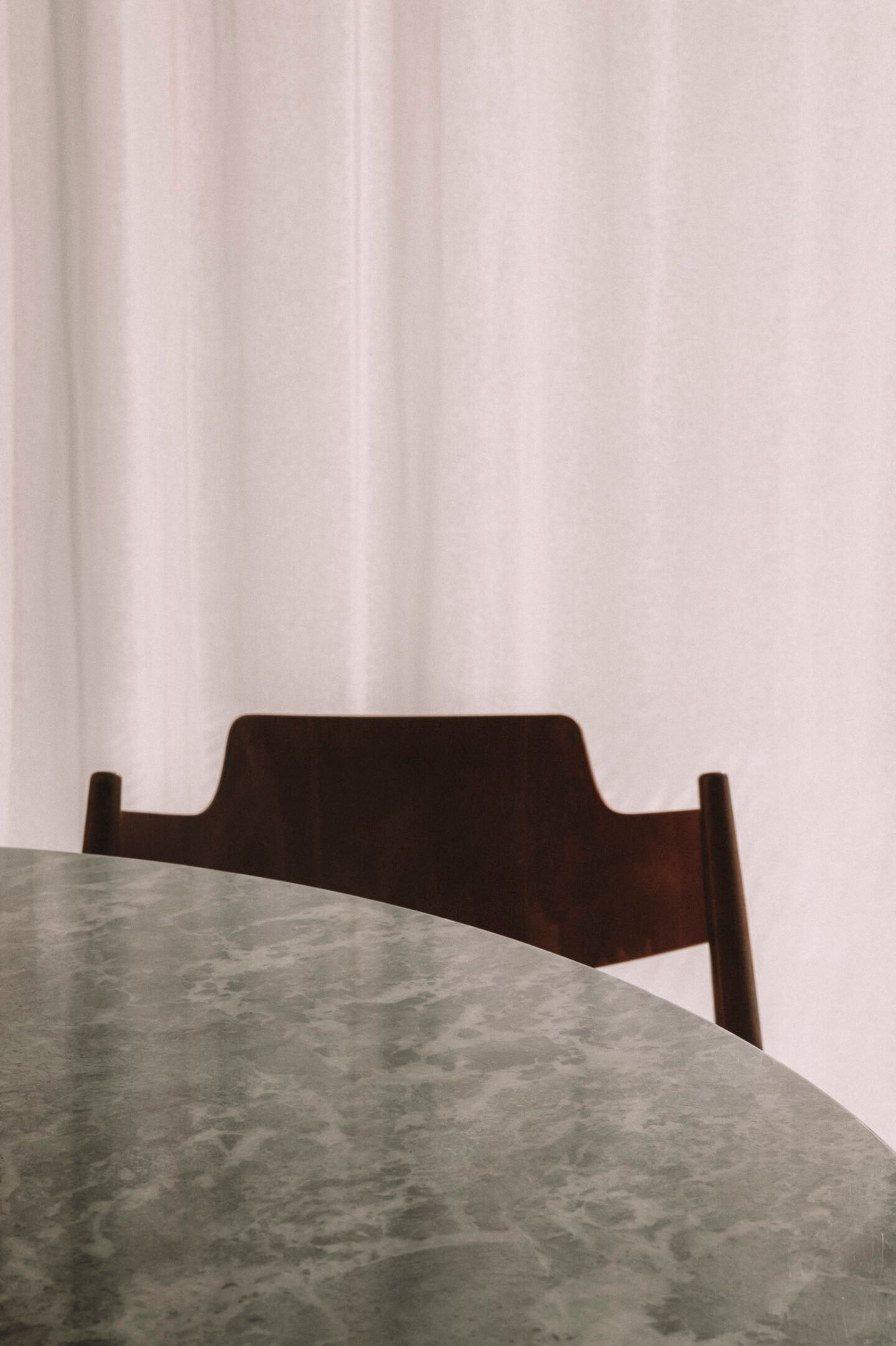
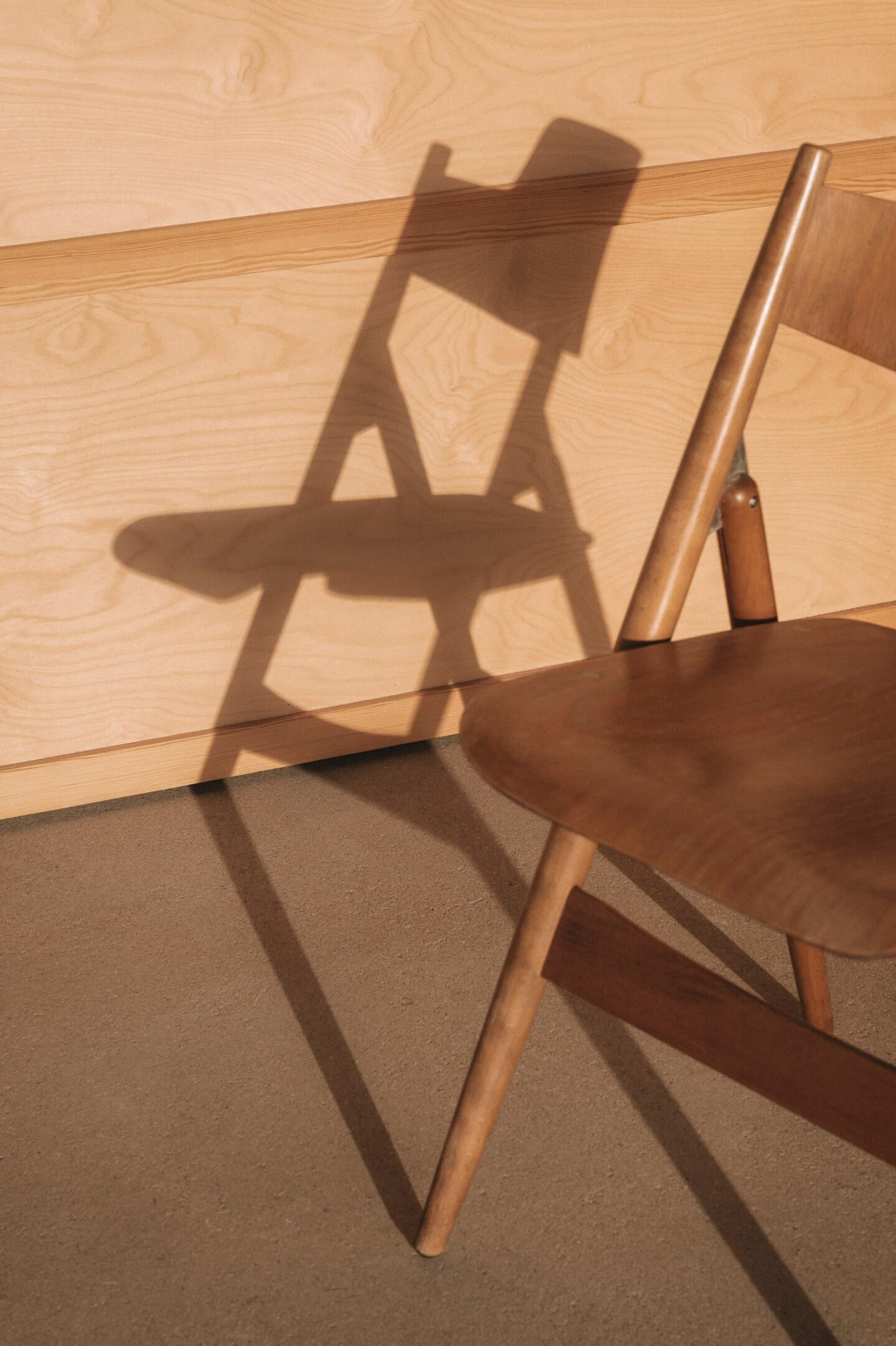
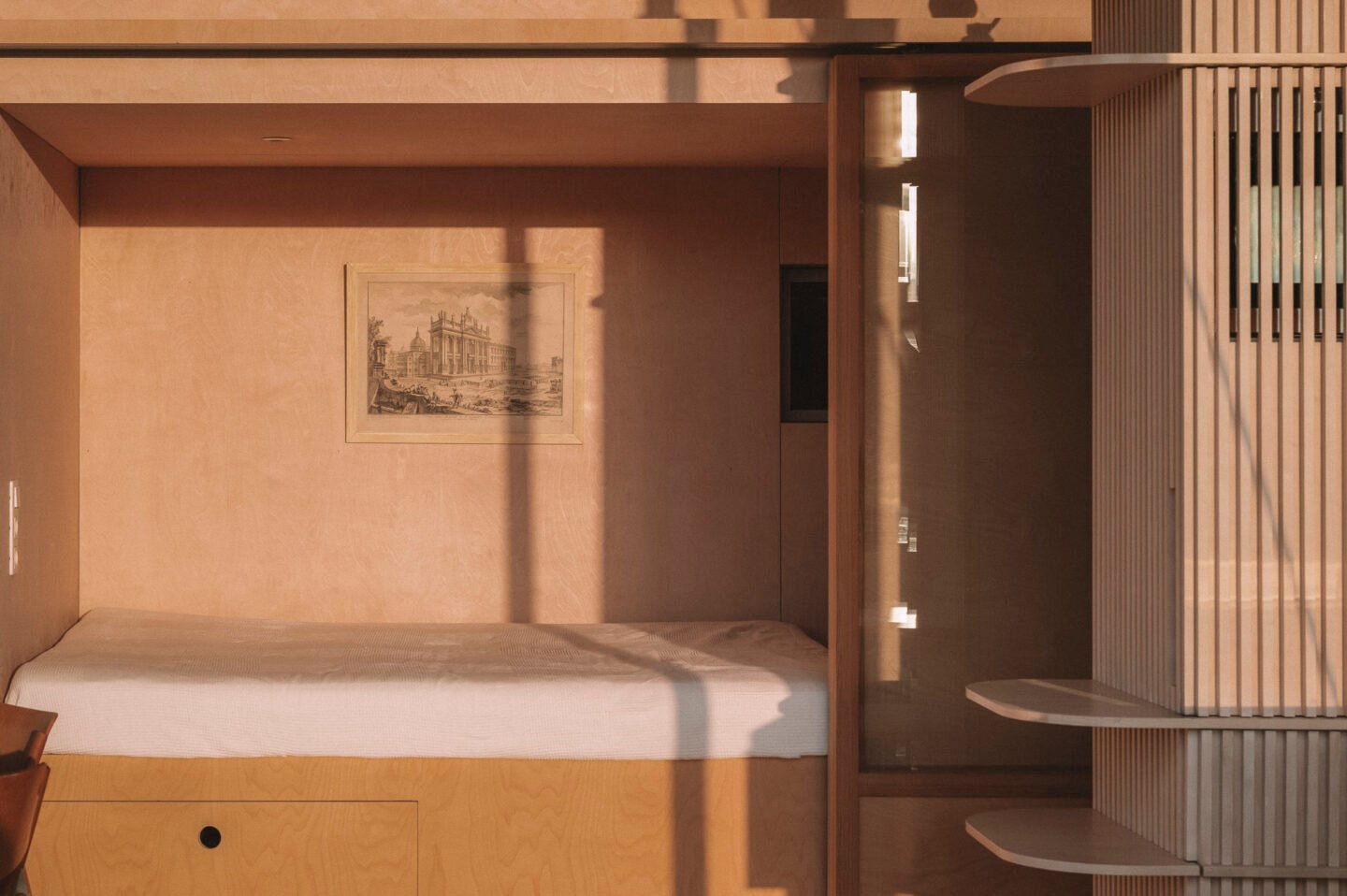
As guests began to inhabit the space, the movements of the farm’s original inhabitants were a concern. “What happens when the sheep are loud in the morning, up there making sounds, coming too close?” Sunder-Plassmann recalls his initial hesitation. The fear turned out to be unfounded. “It was completely the other way around. Guests love that the sheep are coming to wake them up super early at 6 a.m. You are part of the surroundings.”
Sunder-Plassmann harnessed the climate to strategic effect. “You’re in the north. Historically, this part of Germany belonged to Scandinavia. It’s usually super bad weather, so we wanted to create something warm, to feel like you’re cozy, comfortable.” He made the foundational concrete slab thicker than conventional so that it would passively sustain its own heat. “You don’t need to heat the building from March to November, because we use the solar effect. Only in winter, we run floor heating,” he says.
The interplay of light in the space, too, embraces the site’s conditions. Lapped by the Baltic Sea to the east and the North Sea to the west, Schleswig-Holstein stretches north under an ever-changing sky. “Casper David Friedrich made many paintings about this,” Sunder-Plassmann notes. It was also important to offer guests the freedom to modulate it according to their preferences. Semi-opaque curtains provided the solution.
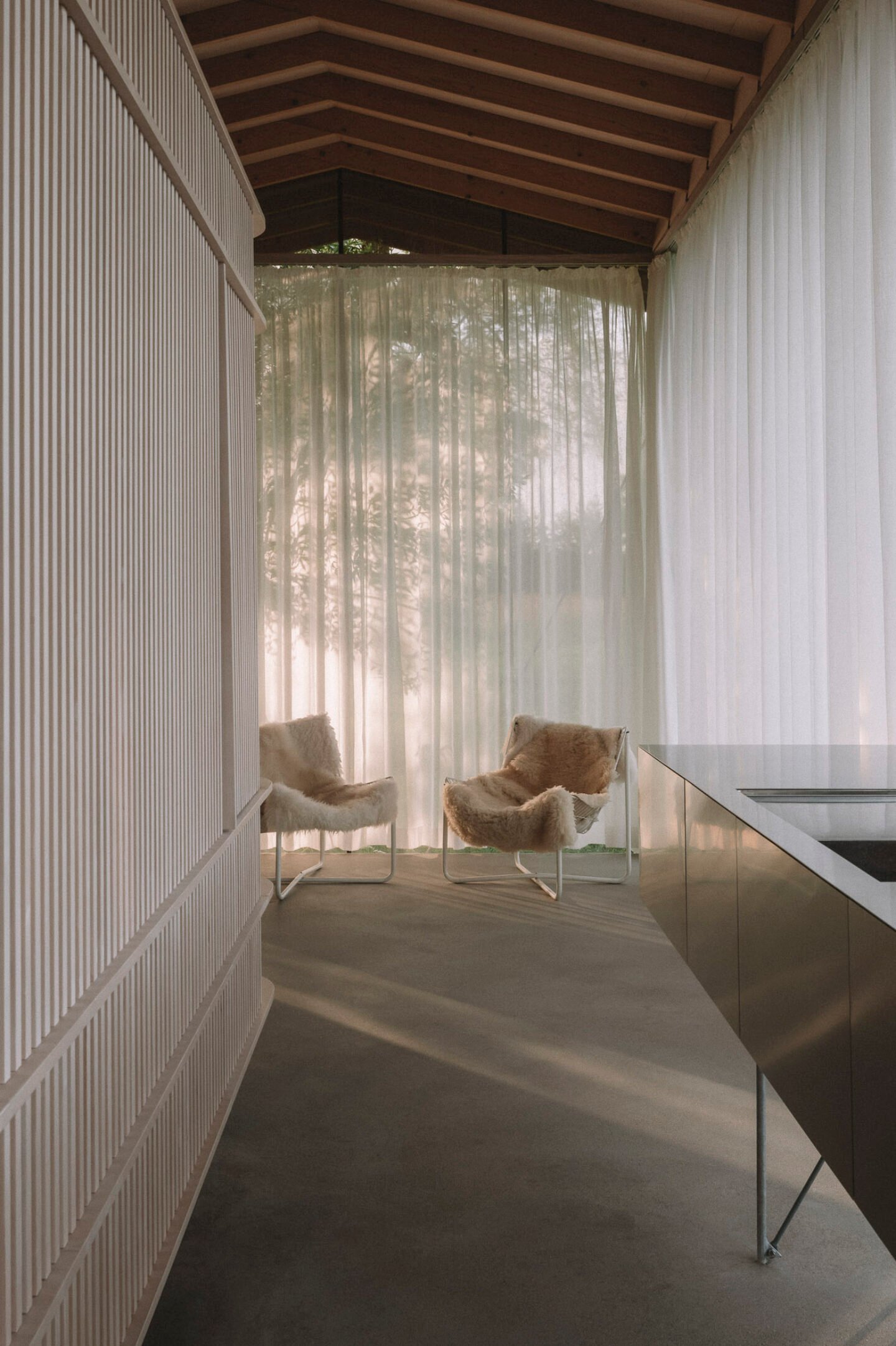
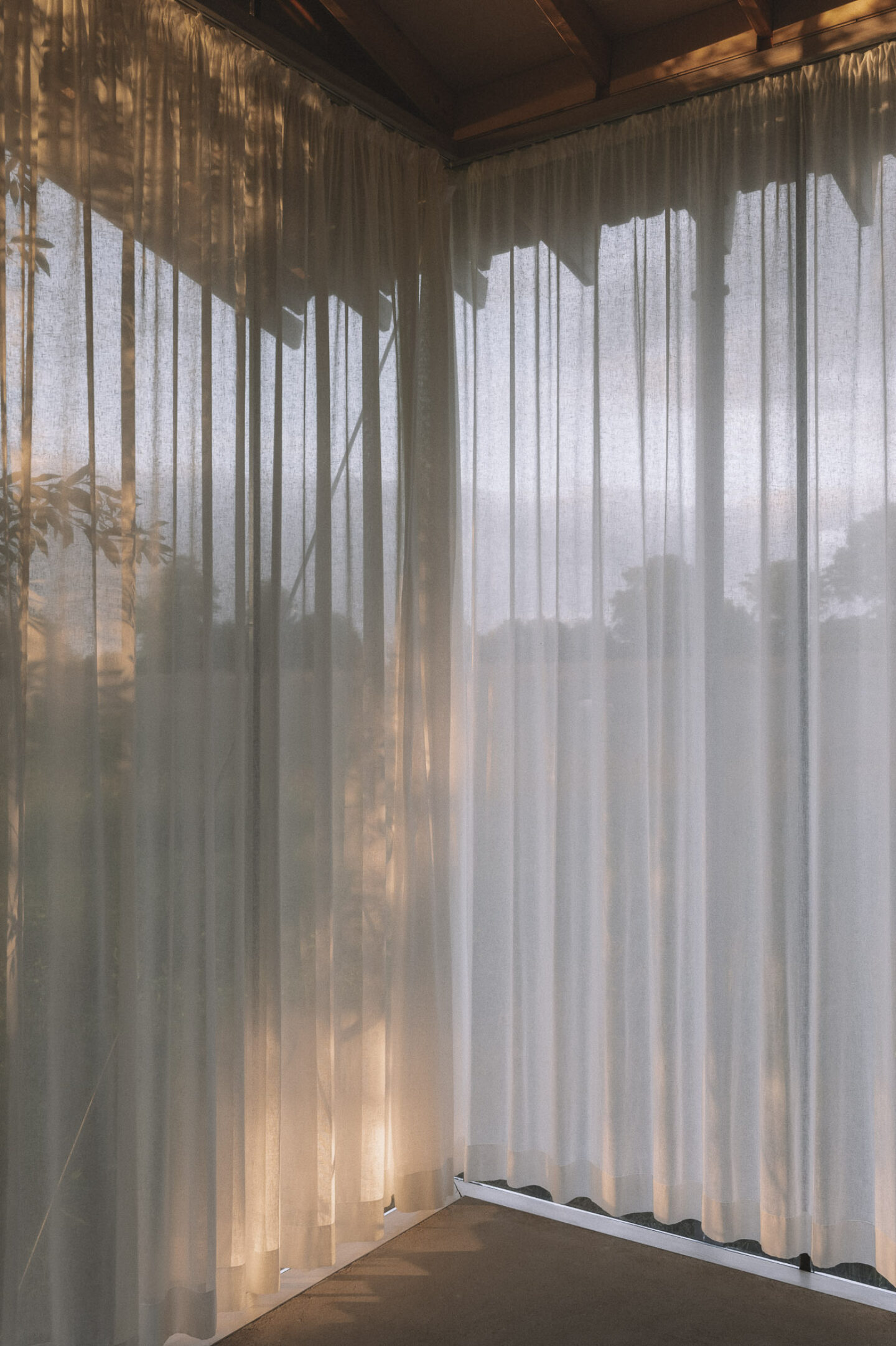
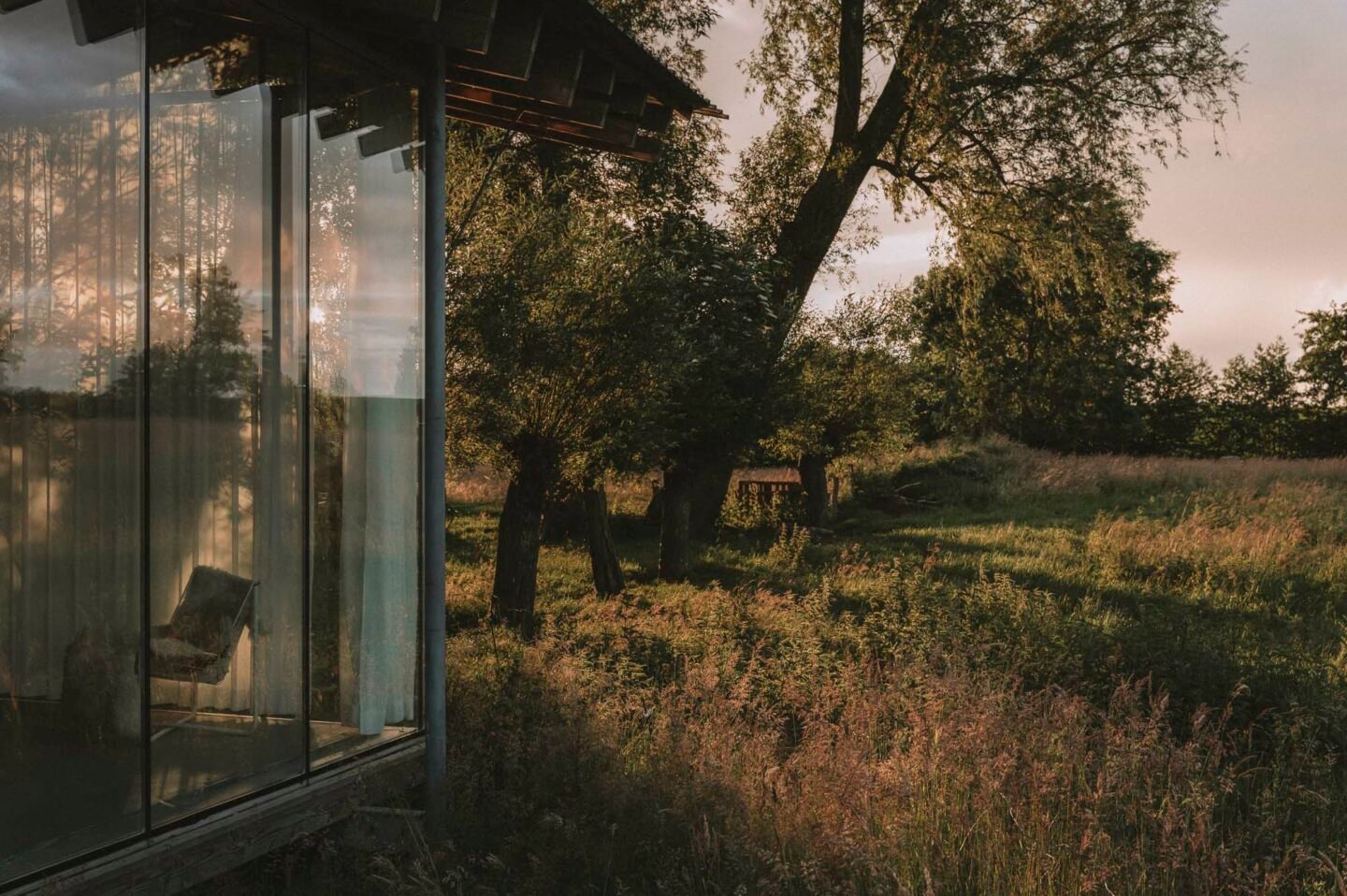
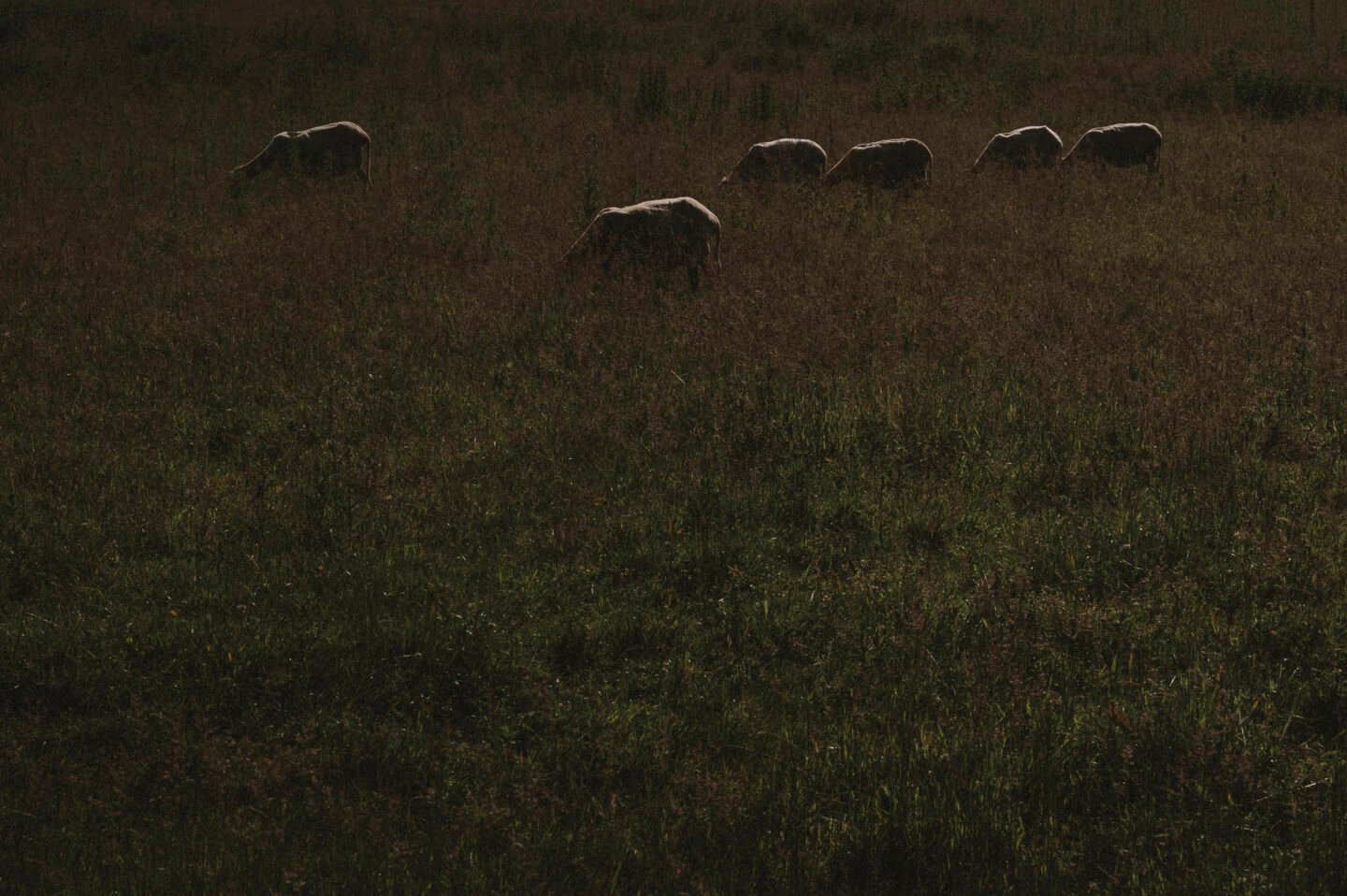
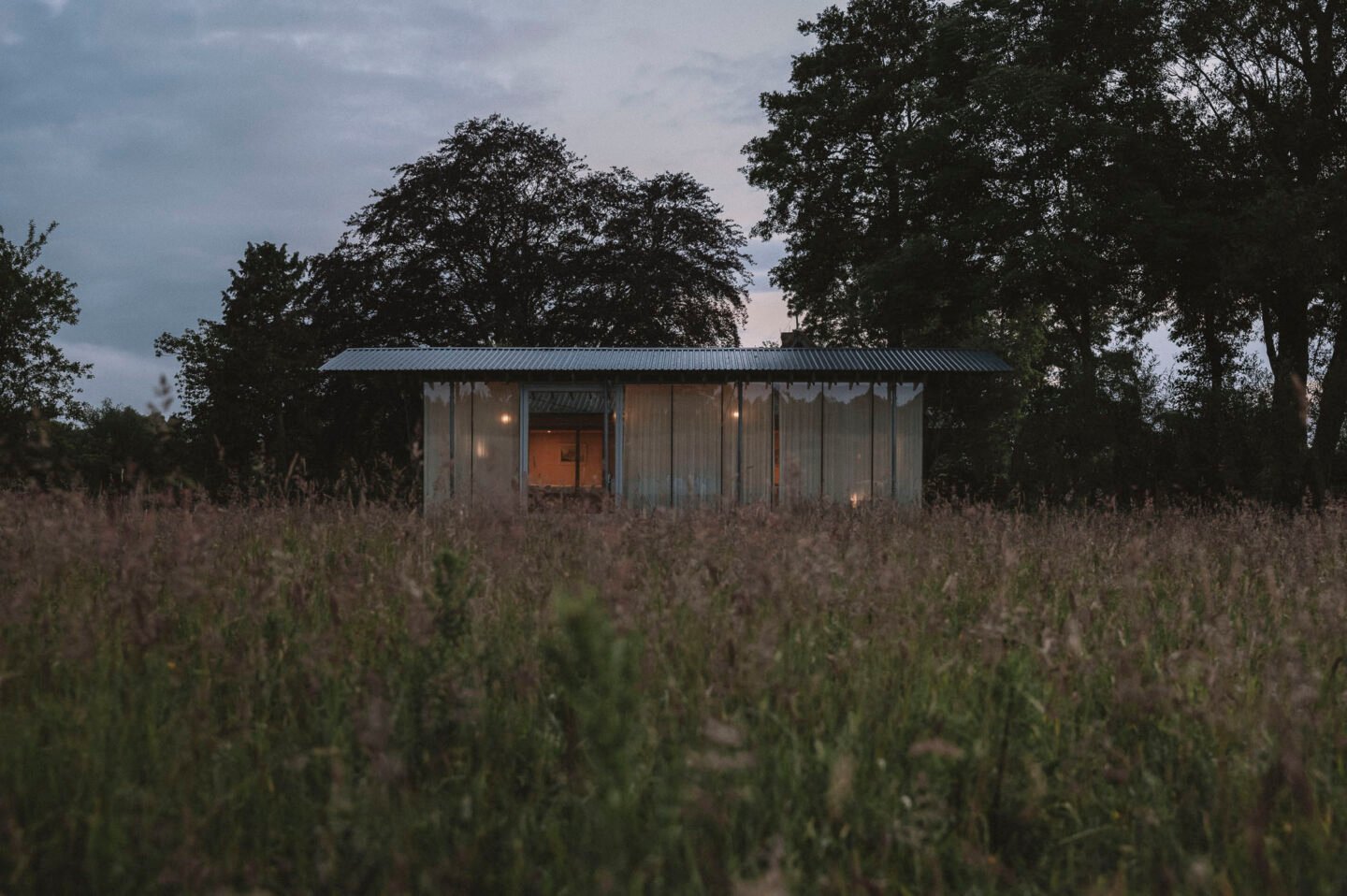
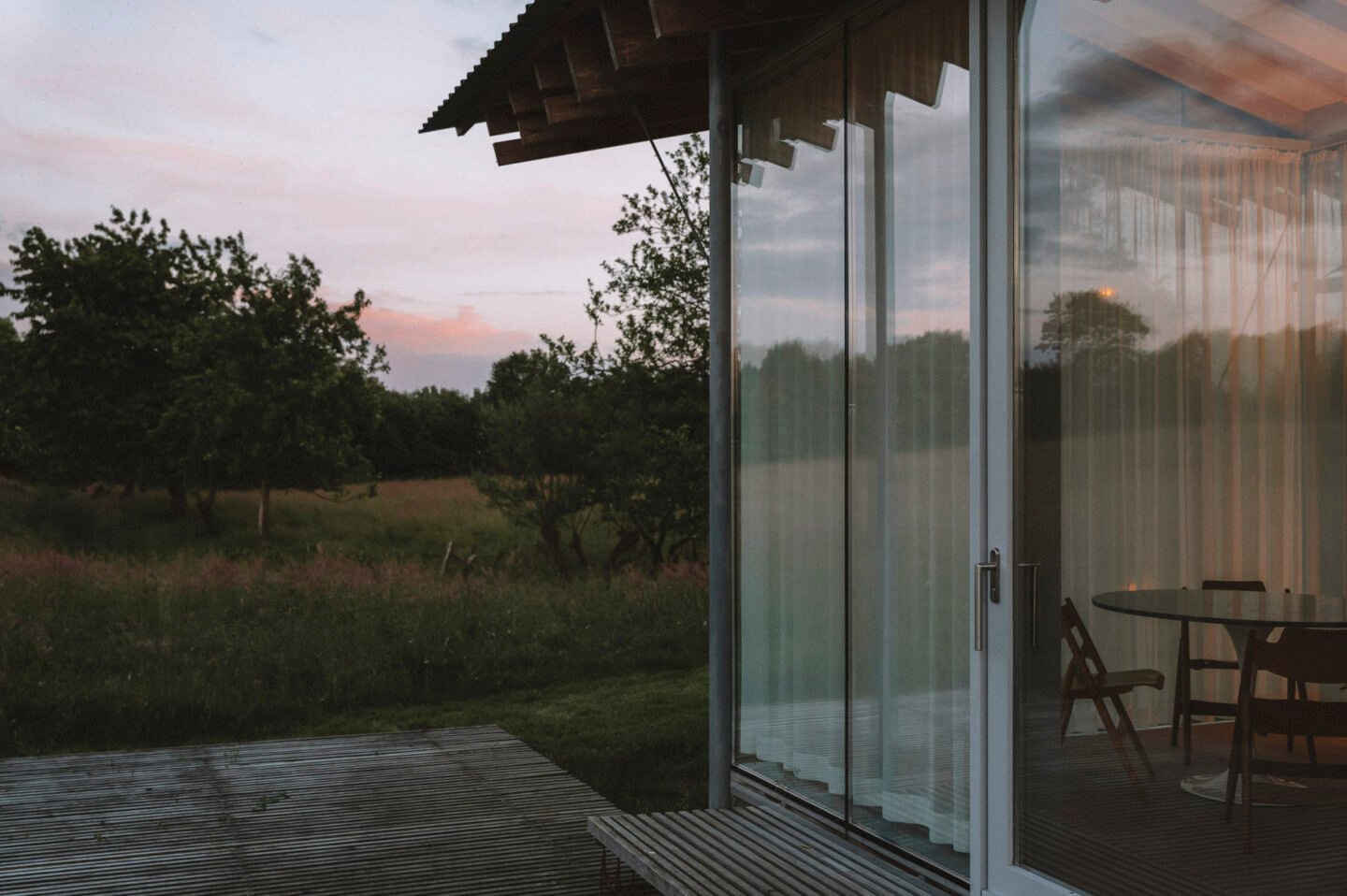
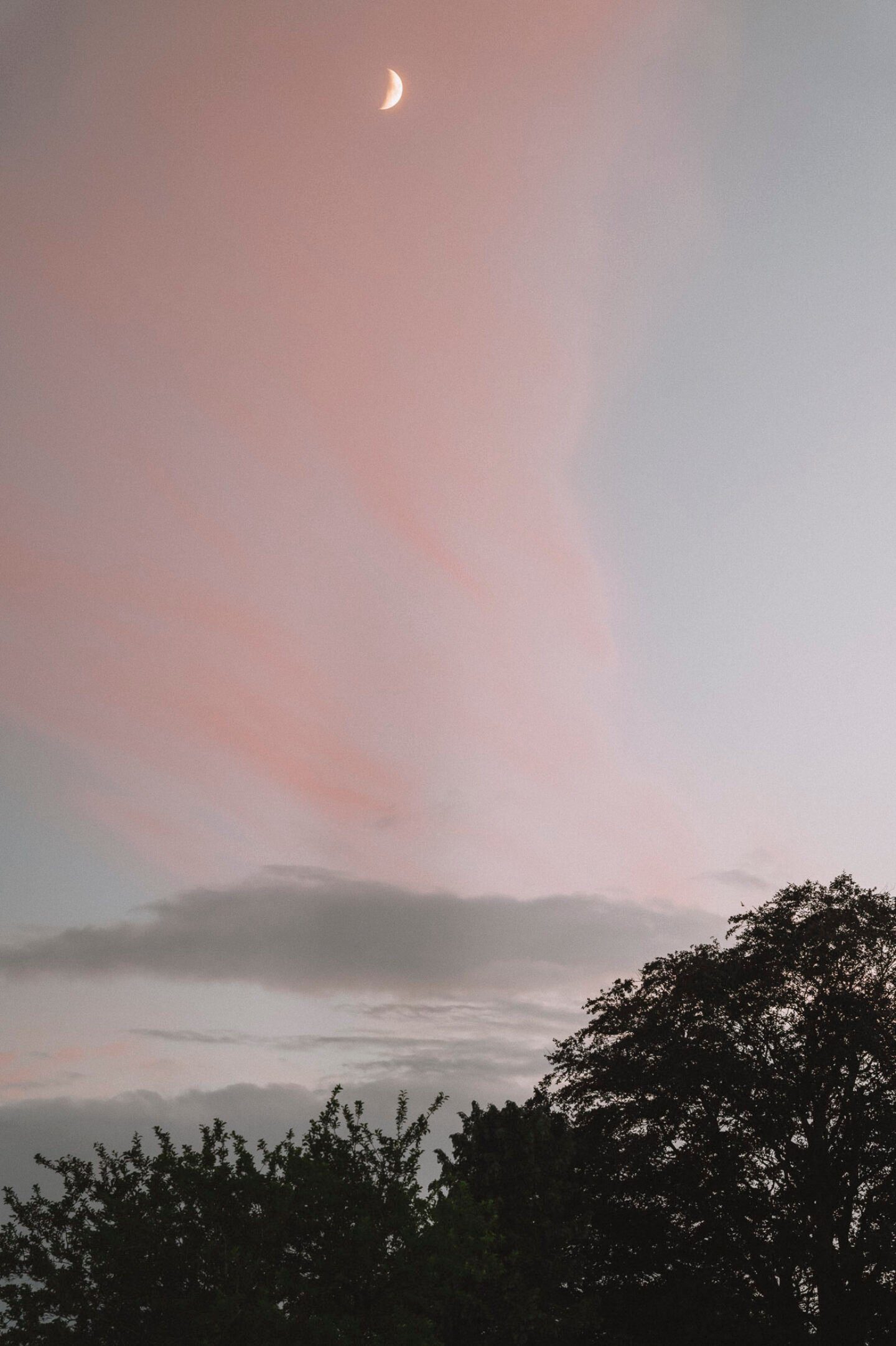
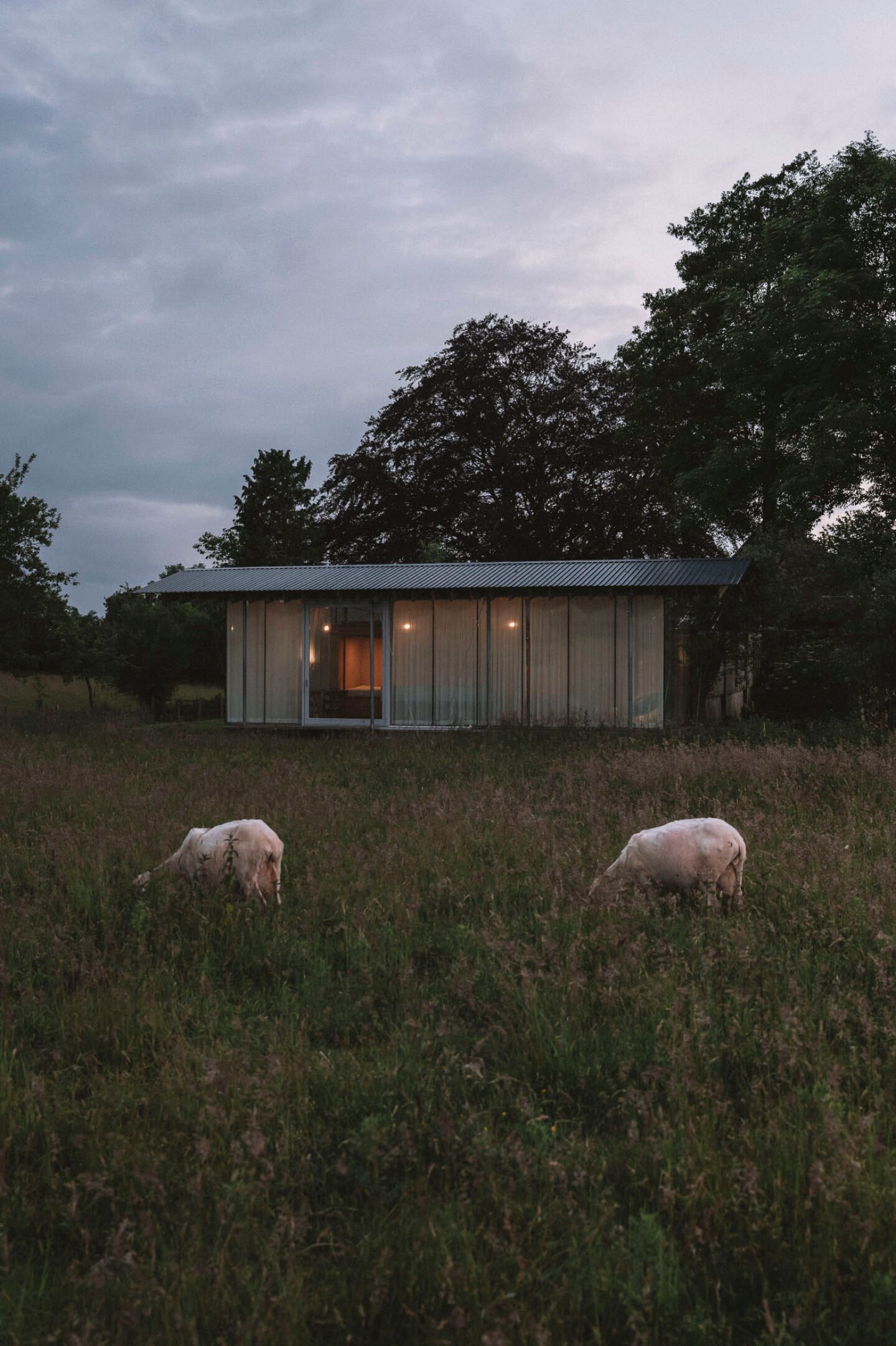
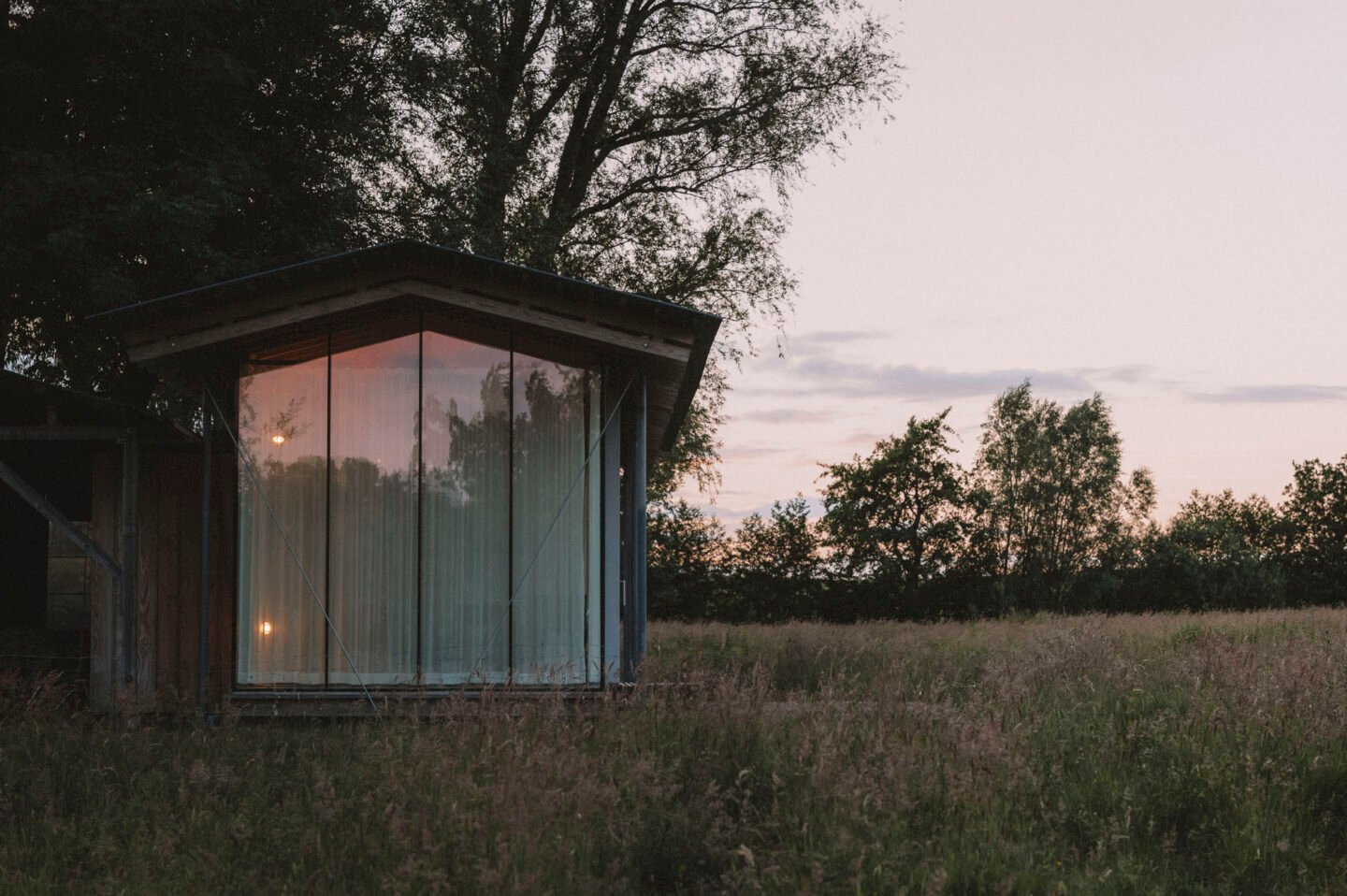
Since Hof Ahmen broke onto the scene in 2022, Atelier Sunder-Plassmann has since expanded into a four-person practice to accommodate the requests that have been pouring in – not only for stays there but to commission further editions of Hof Ahmen. “Pretty often, we have this first talk: ‘I would like to have the same,’ ” he notes. “Then we always have to say ‘yes, of course, but there is a site, and a building is always linked to the site. It will always be slightly different.’ ”
"...we don't want to do only architecture for images. We want to do architecture for the space itself.”
Beyond diplomatically diverted replica requests, further projects come through collaborations and competitions, including Schleidörferzentrum Boren and the Arolsen Archive. “A garden house in an apple orchard” is one throughline currently in realization. So are hotel extensions and cultural spaces. Many more threads wait to be pulled into projects. Each will find a singular form, true to the office’s MO. Though understandably reluctant to put words to his approach, Sunder-Plassmann offers, “I think we are able to bring a language into a building.”
Hof Ahmen finds expression in “this gentle International style, at the same time having this slight humbleness with the roof, being connected to the surroundings, being connected to nature, and working with the elements.” He continues, “You have the feeling this building can only sit here. We like to combine a strong idea with reading the site – what could fit in that space? Because we don’t want to do only architecture for images. We want to do architecture for the space itself.”
Images © Clemens Poloczek | Text: Anna Dorothea Ker
